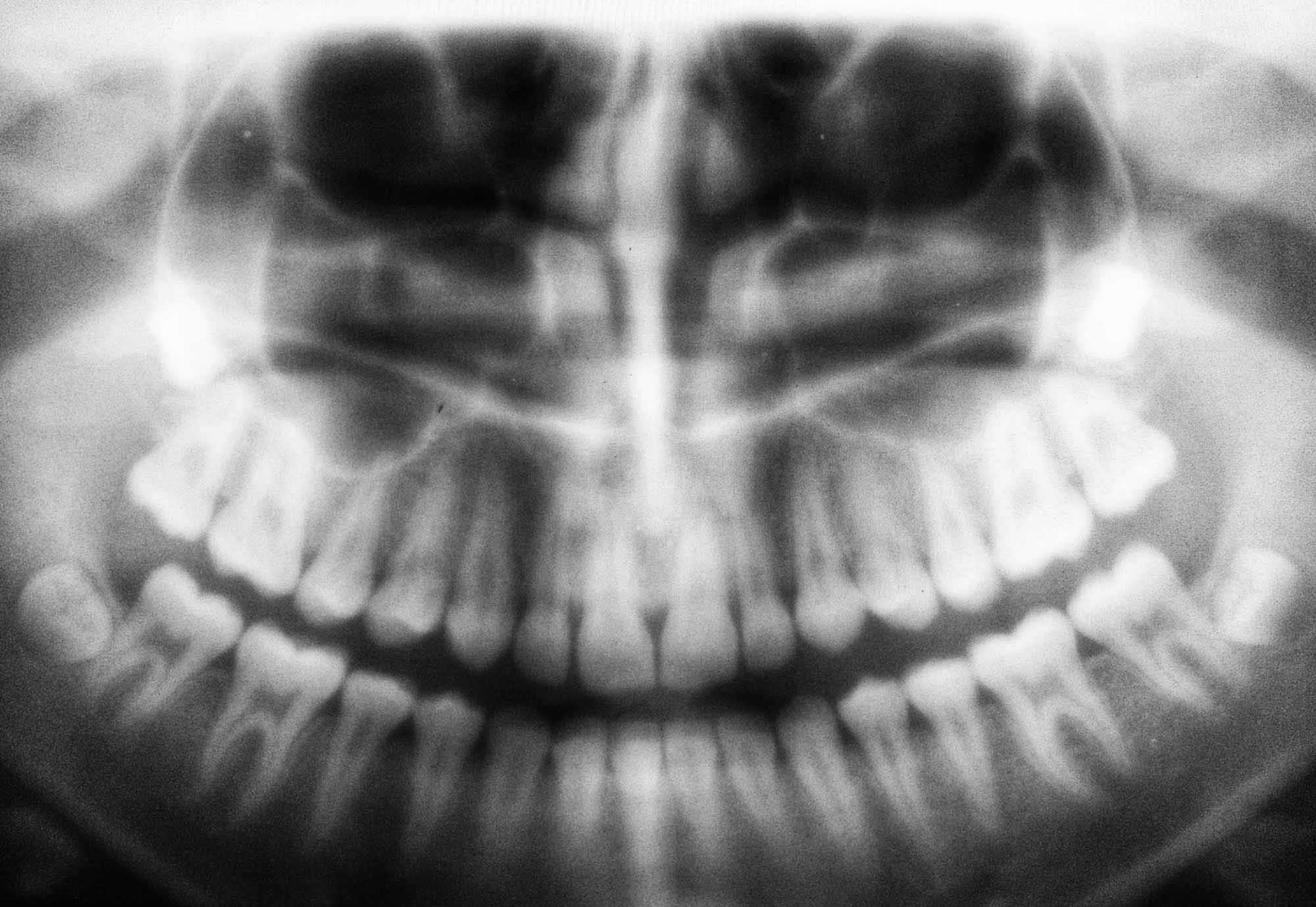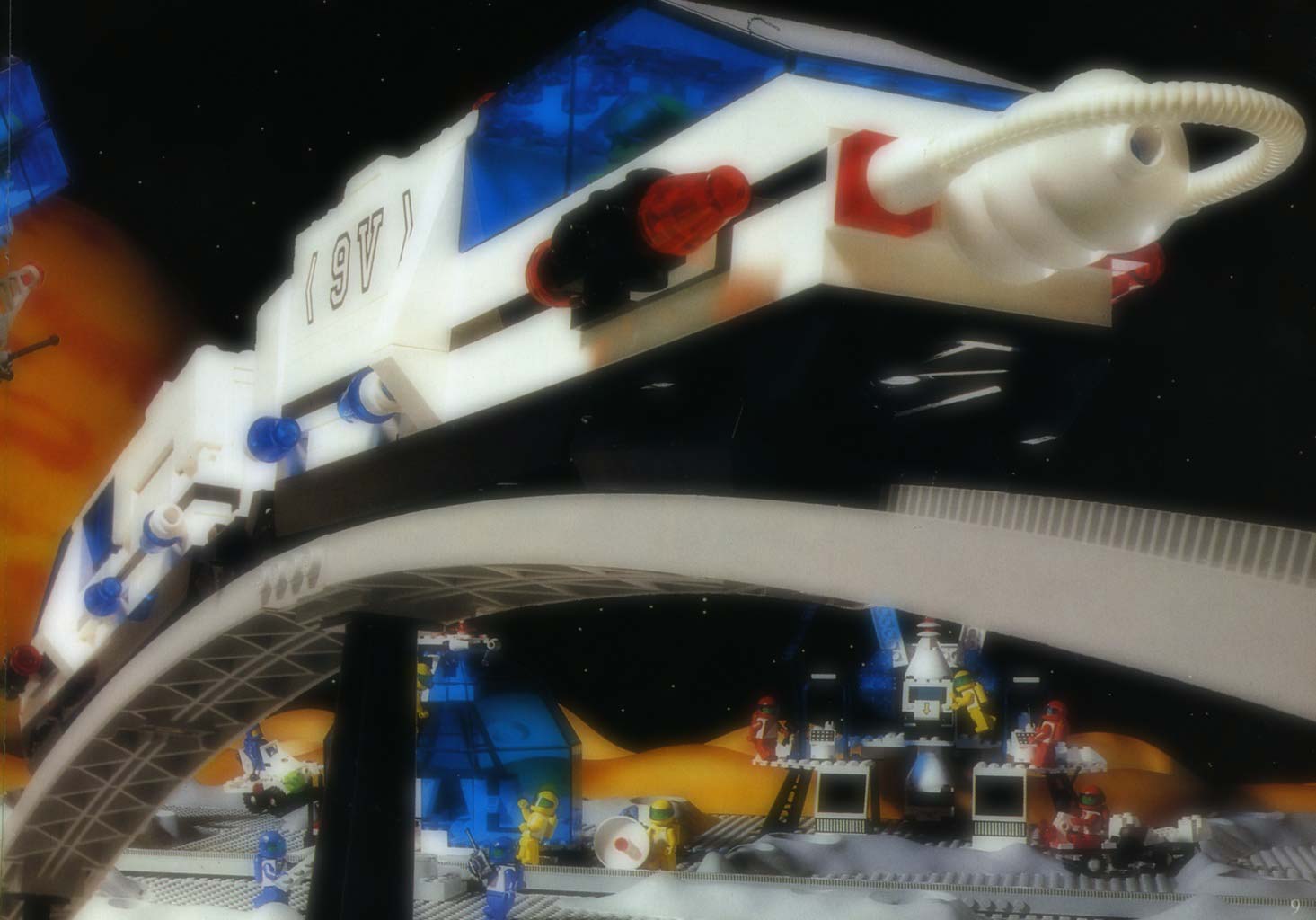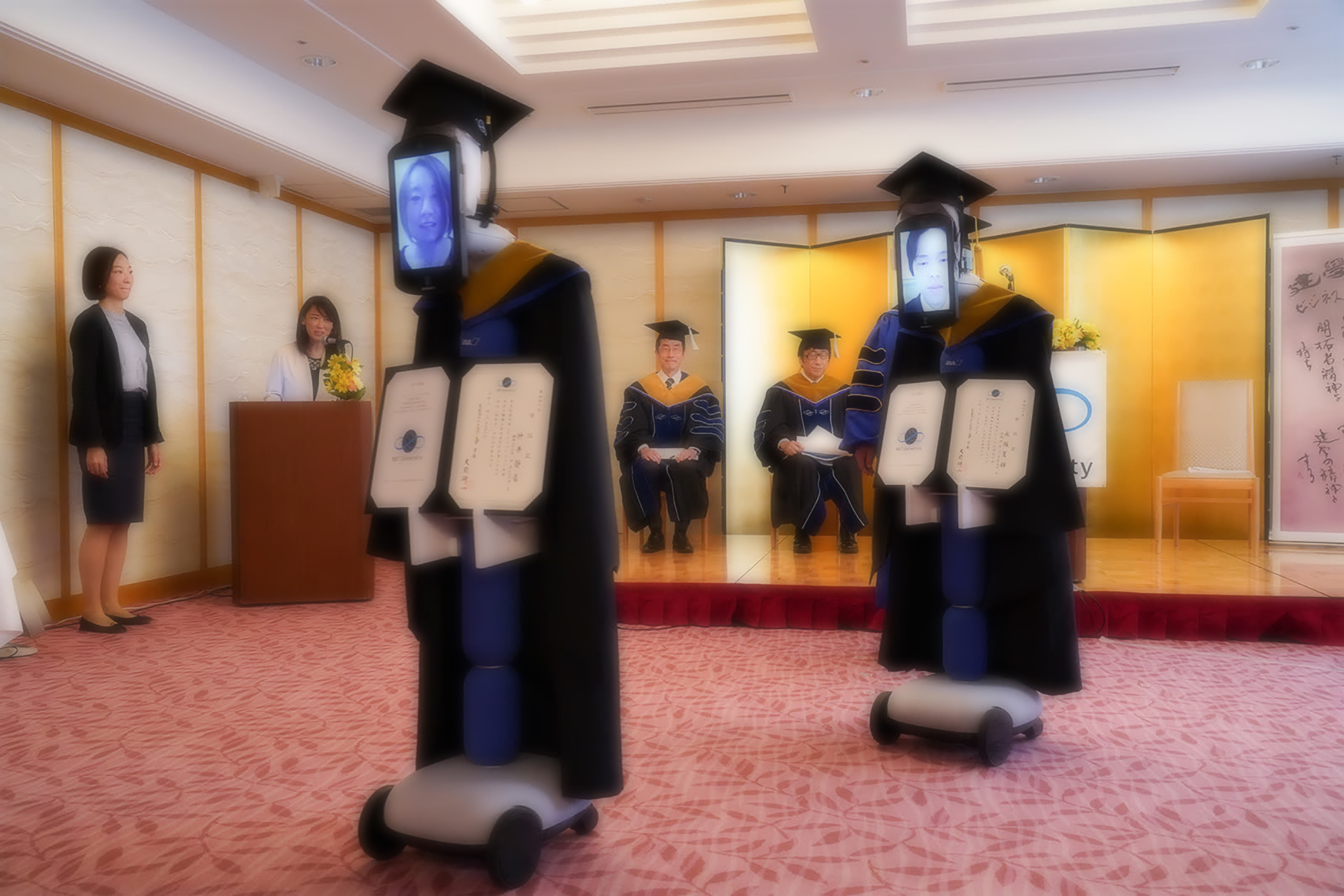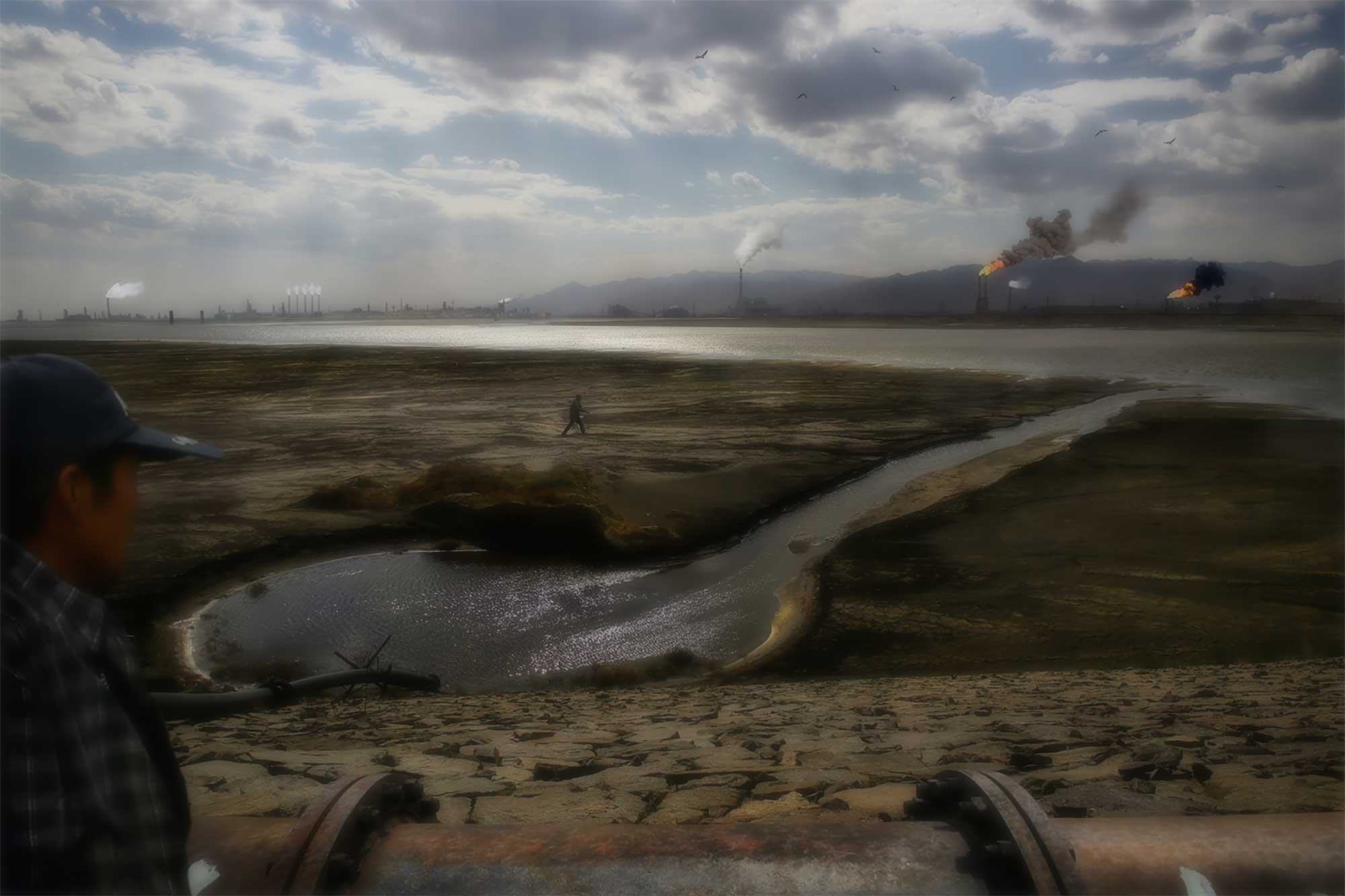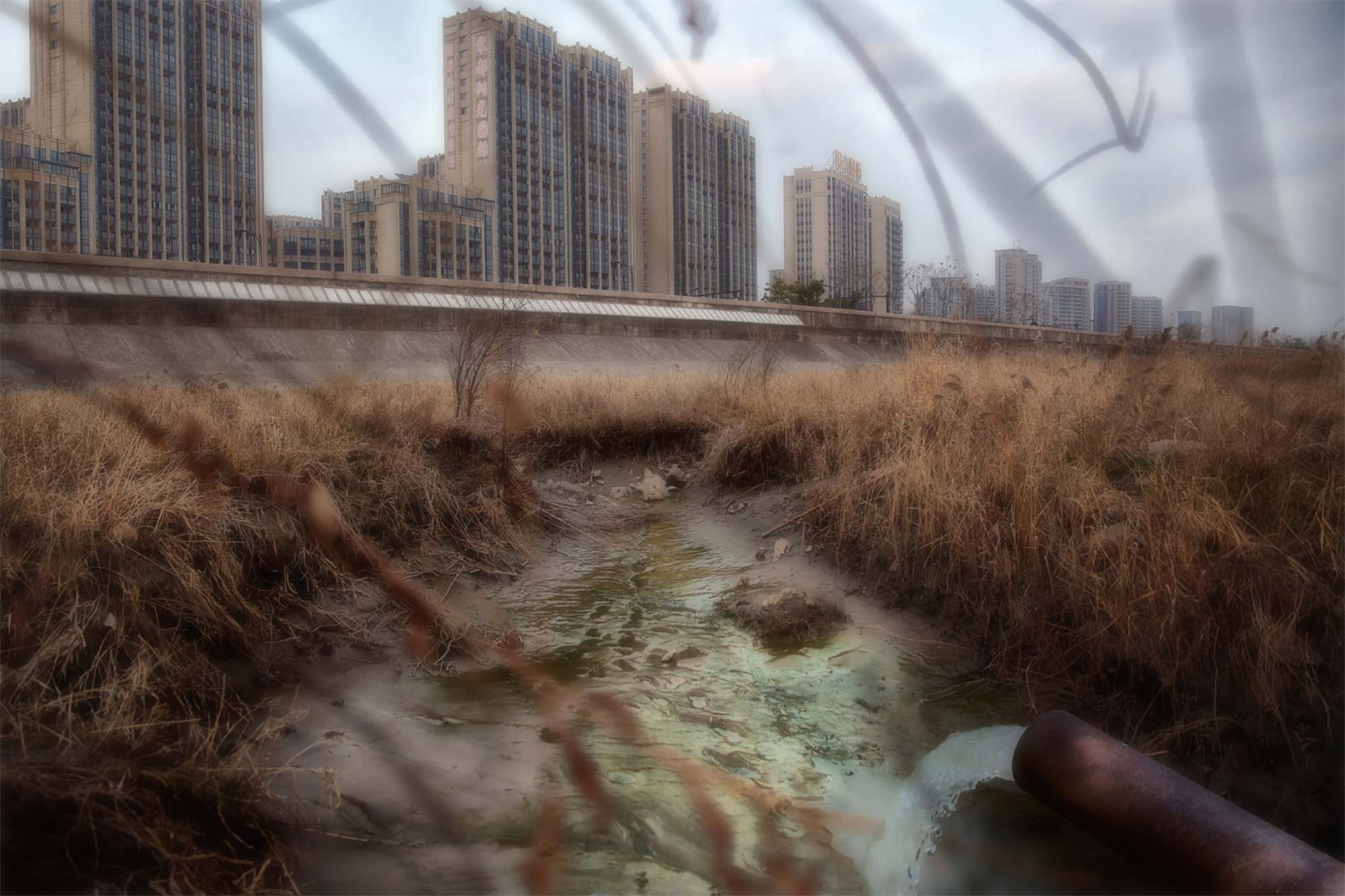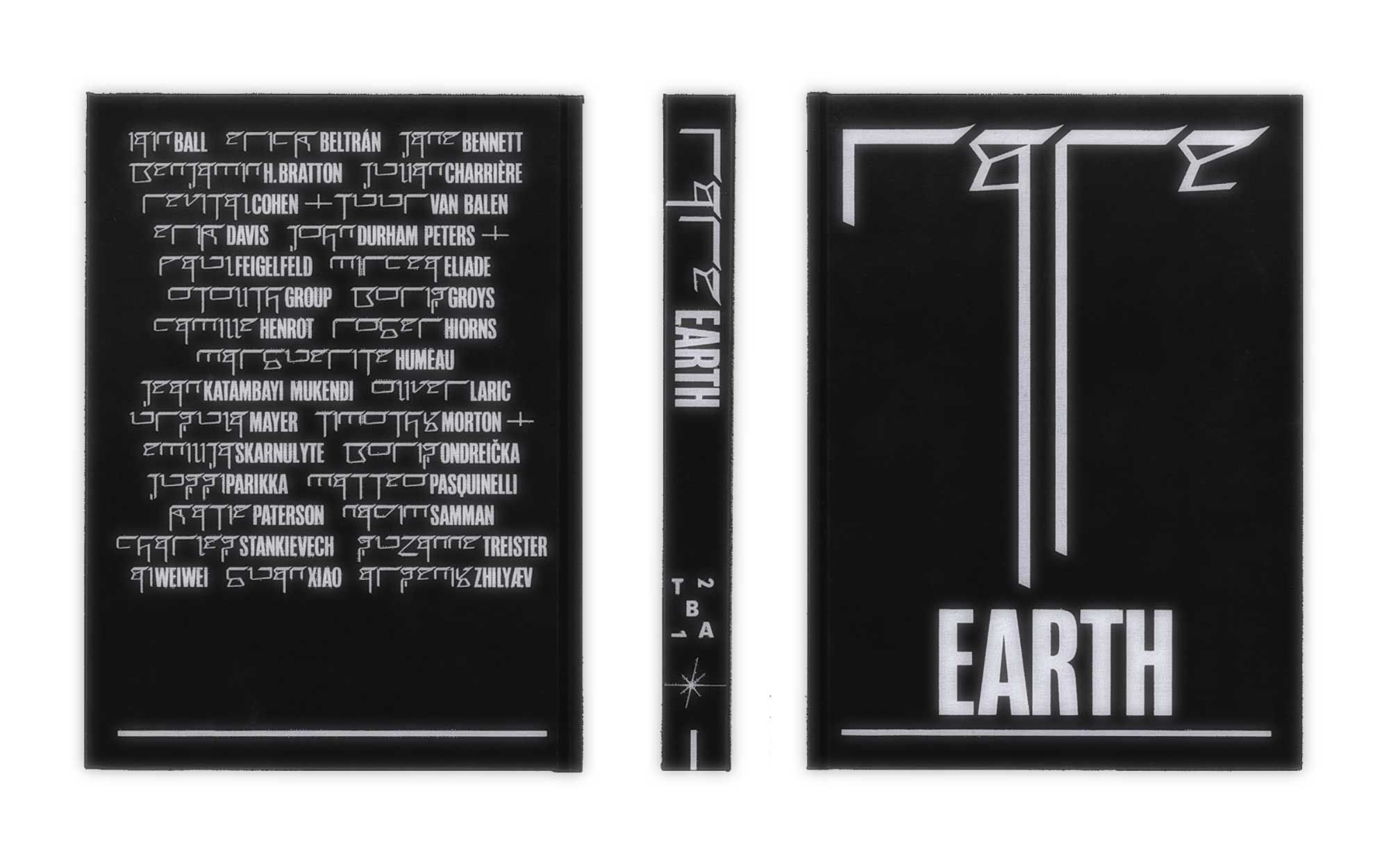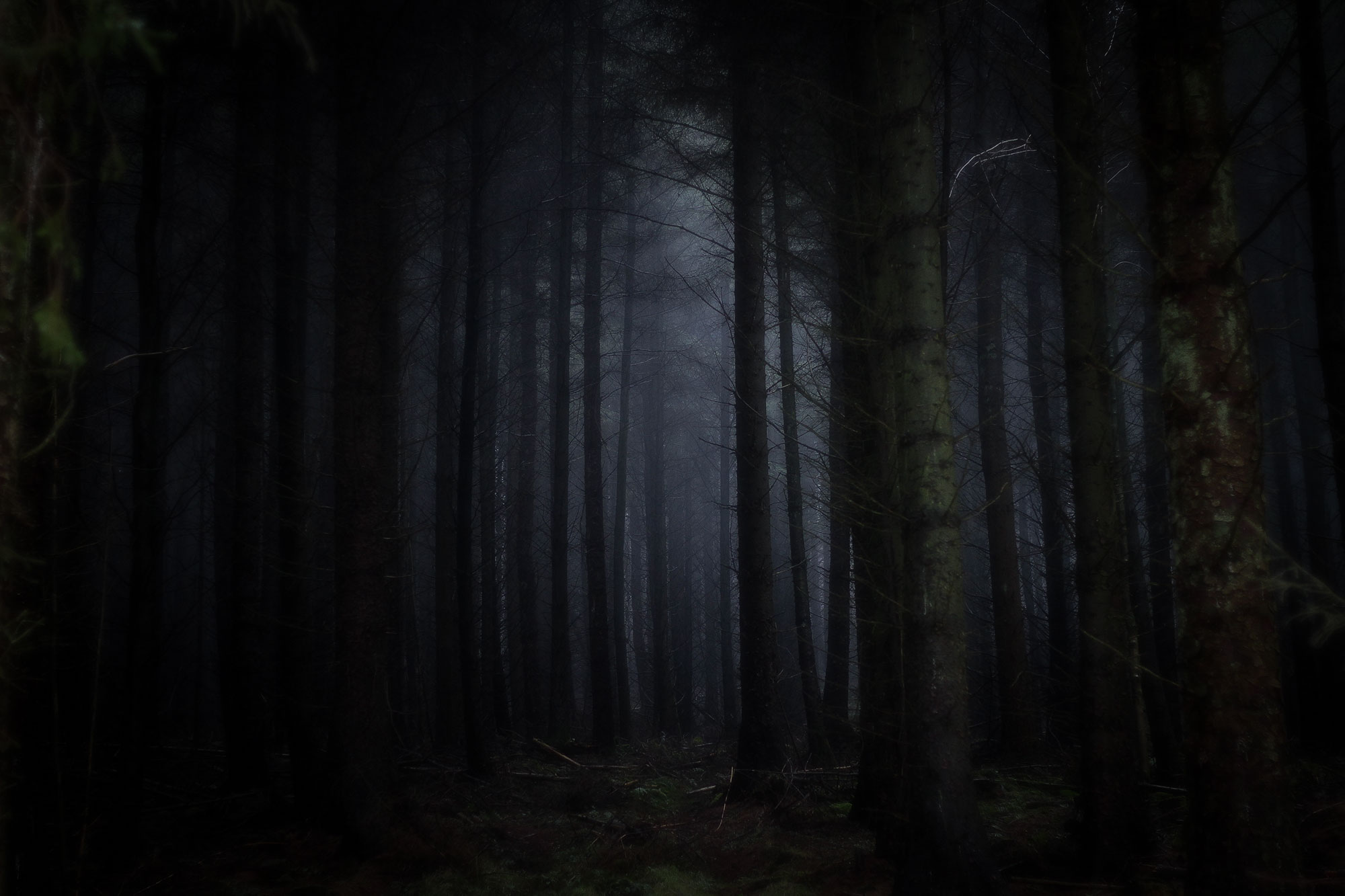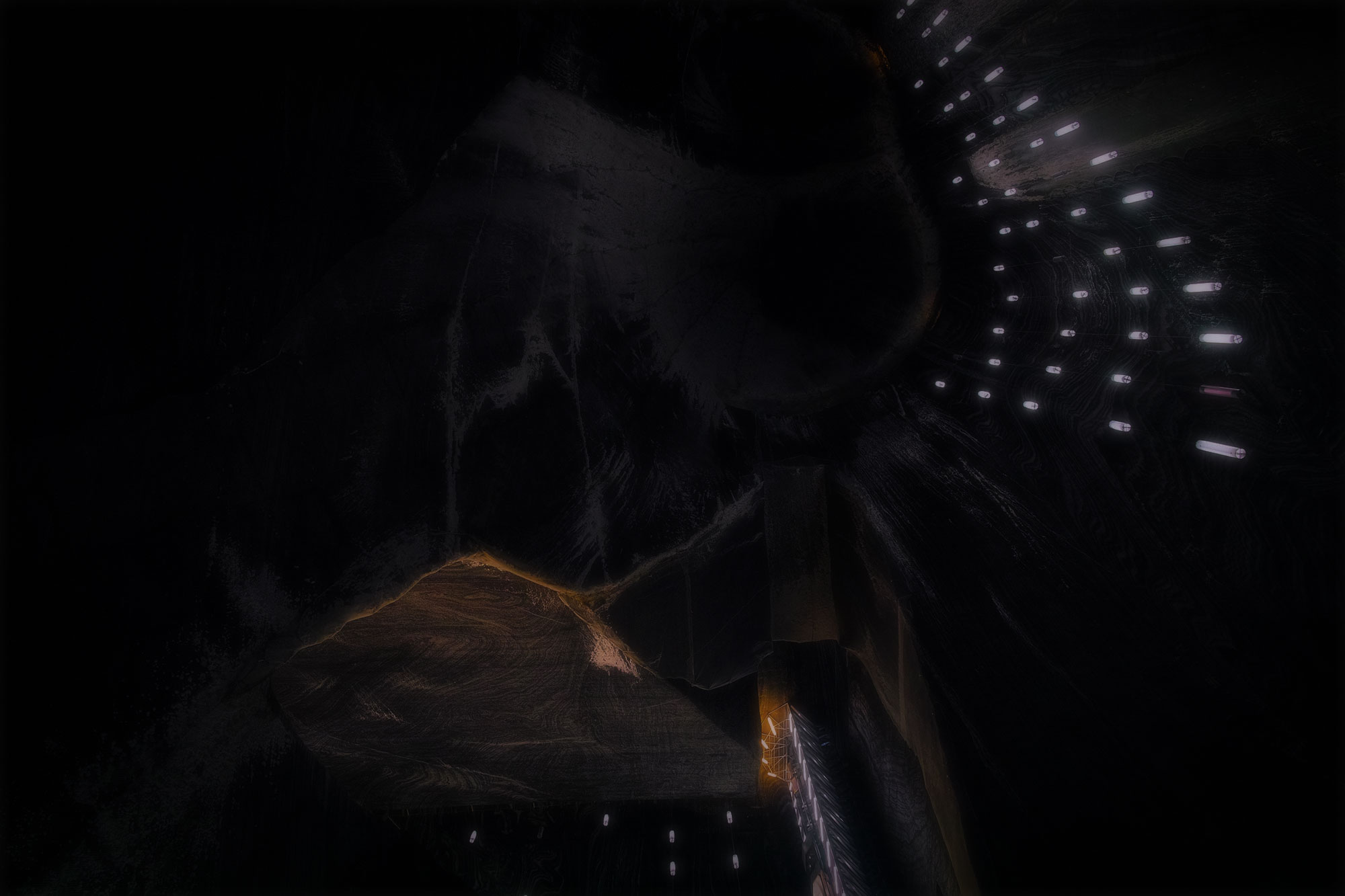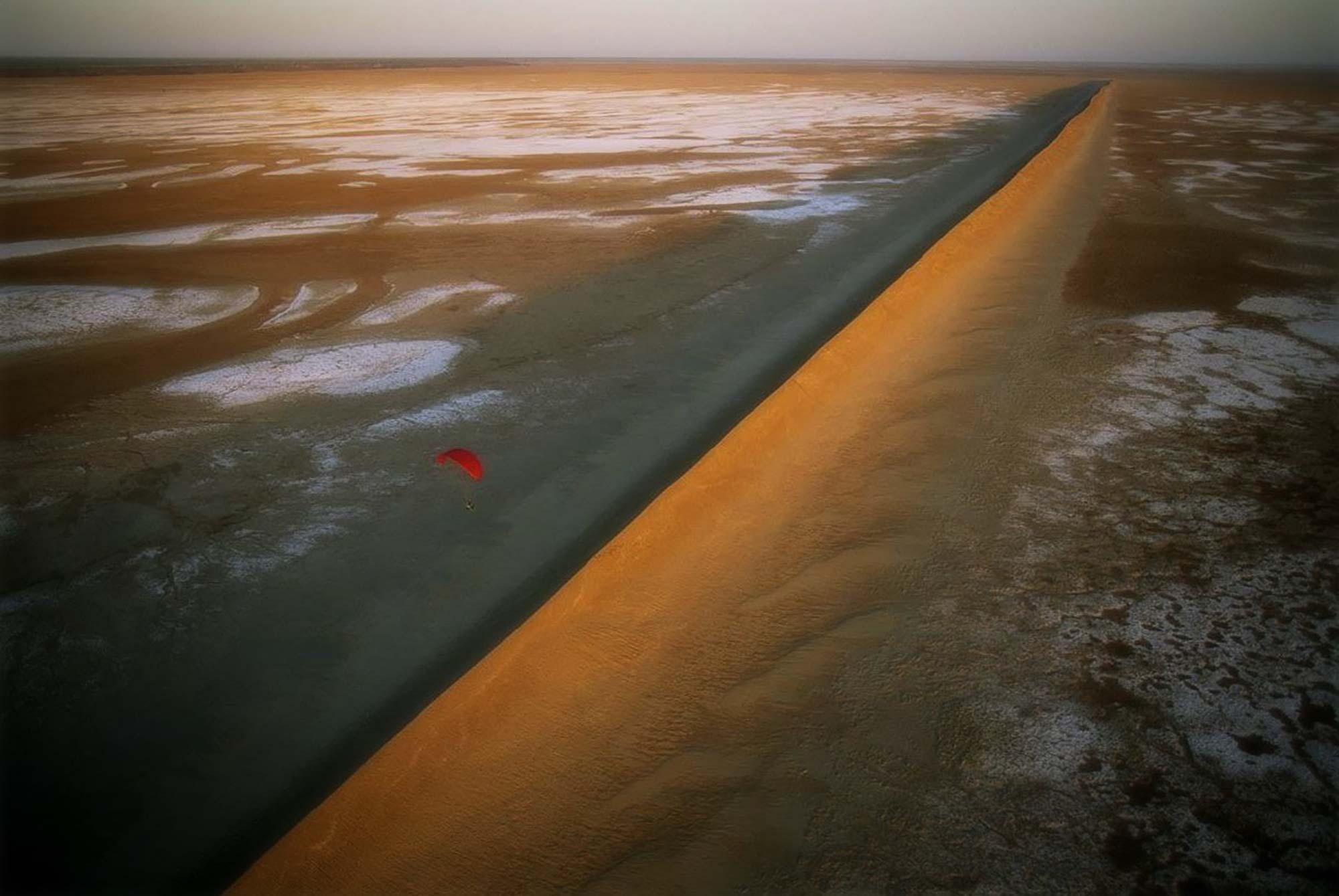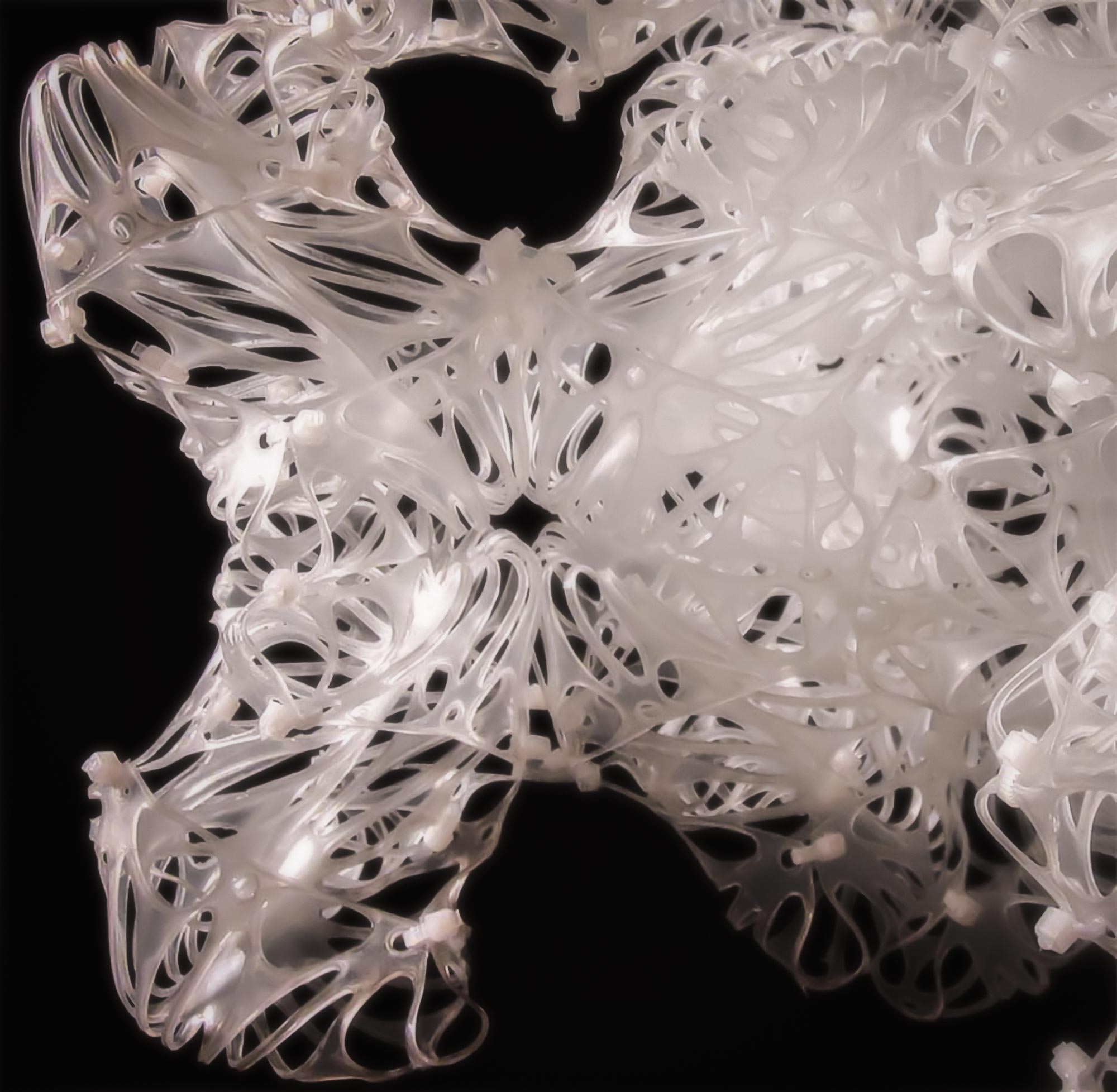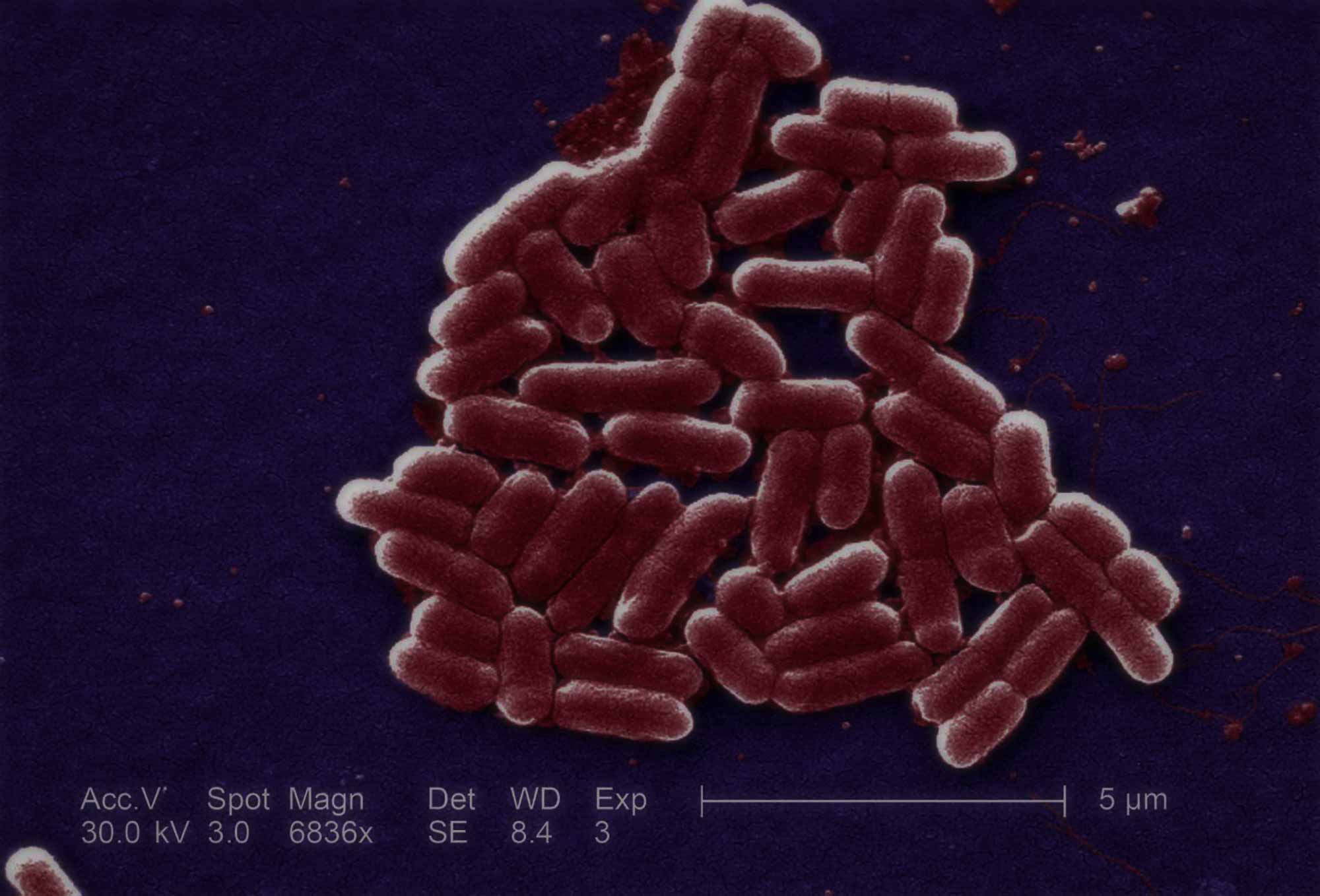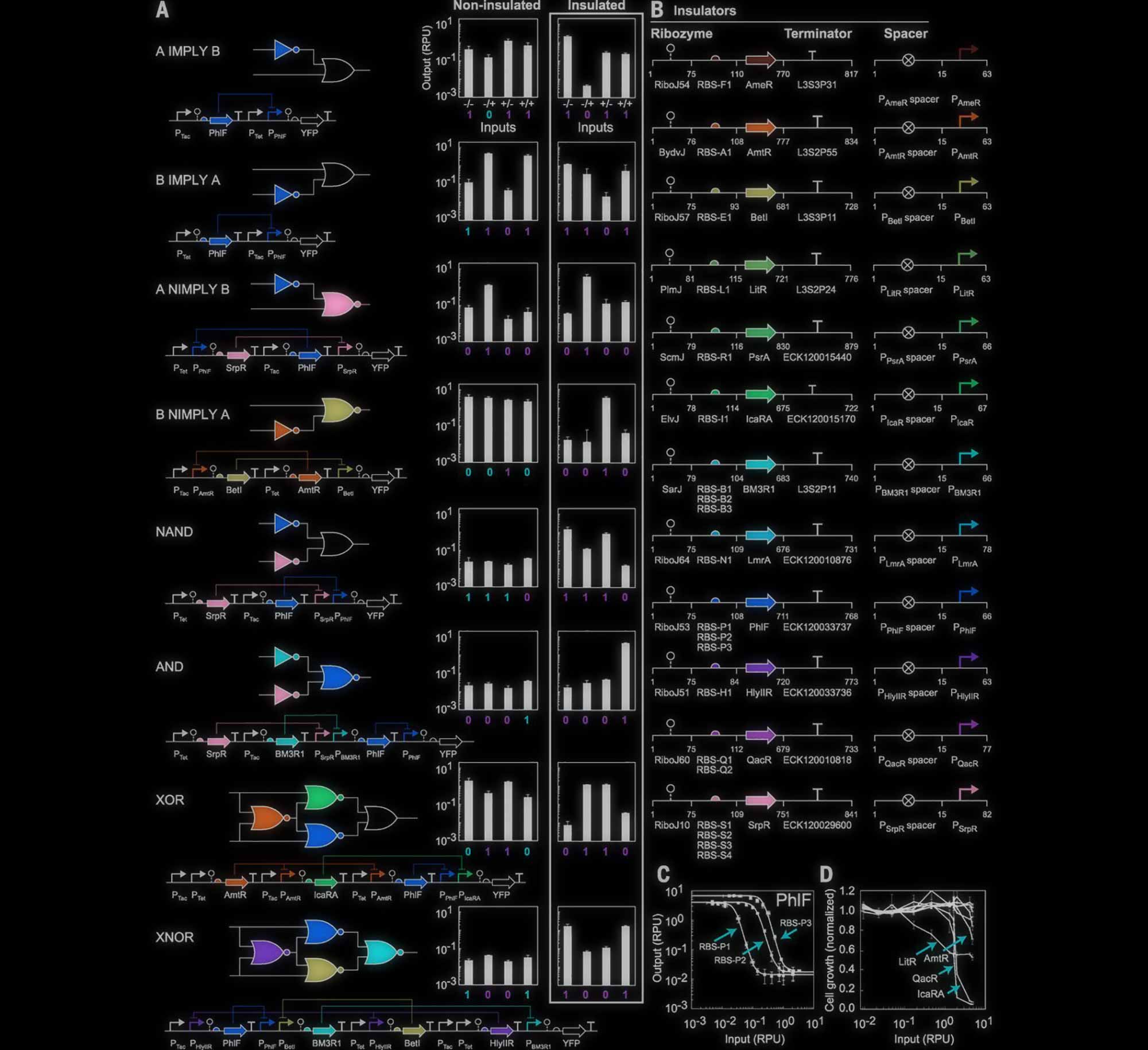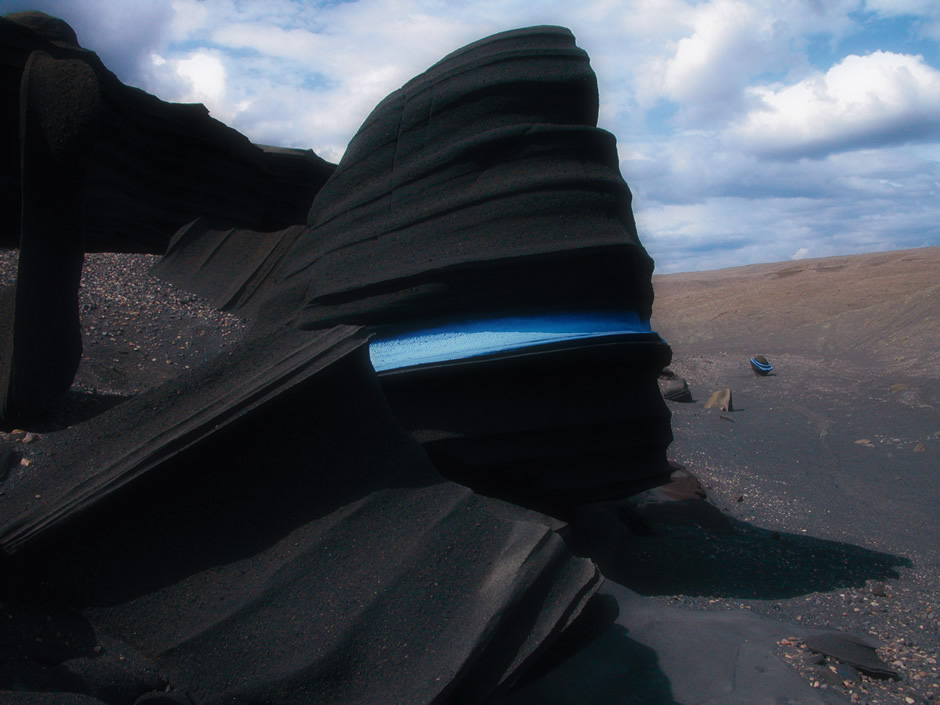ExteRnaLiSatiON
For the past 2 million years, the major evolutions of the homo genus have been brought by the fundamental anthropological process of externalisation.
Jealous of the flying birds and inspired by the strength of the tiger, our ancestors started to use dead chunks of nature to expand their powers.
Weak muscles may be the price we pay for the metabolic demands of our amazing cognitive powers.
Some being so ancient that they have been shaping our body.
|long term integration|
Most being so integrated that they changed our habits.
|middle term integration|
All being so useful they changed our minds.
|short term integration|
Toute l’évolution humaine concourt à placer en dehors de l’homme ce qui, dans le reste du monde animal, répond à l’adaptation spécifique. Le fait matériel le plus frappant est certainement la «libération» de l’outil, mais en réalité le fait fondamental est la libération du verbe et cette propriété unique que l’homme possède de placer sa mémoire en dehors de lui-même, dans l’organisme social.
We externalise our bodies through tools.
We externalise our spirits through the media.

Tools and media help us establish control and communication.
Control and communication result to greater security and new emotions.
Security and emotions simply make us feel good.
Layers of reflexion are gained through the help of externalisations;
we use tools to make tools and we use mind decentralisation through communication and external memory to facilitate the access to new reflexions.
This empowerment stimulates itself;
externalisation and invention lead one to another.
Design is at the core of the externalisation process;
the production of good, relevant, beautiful externalisations.
LiMiTatioNs
We’ve been developing thanks to the gathering of matter. We all need external matter, it’s a matter of fact.
Life on earth developed thanks to many extraordinary, contingent events. The precise astrophysical setting of the earth is unique and fragile. The disturbances caused by the human externalisations era |anthropocene, capitalocene| put in danger the ecosystems that support life on earth.
For more than a century we’ve been excavating like there is no limit. These extractions make us grow. They make us consume. They make us bulimic.
Global gross domestic product has doubled since 1970, enabling immense progress, and lifting of billions of people out of poverty. At the same time, this economic growth has been fueled by a relentless demand for natural resources. At no point in time nor at any level of income, has our demand for natural resources wavered.
As we lurk in our giant kitchen looking for some pleasure, our need for solace is obsessing us. Depending on our desire, the time elapsed since the last banquet, depending on the trendy meals, we mentally prepare ourselves for the dinner we’ll get. This is the most important part; we look forward to getting it. Very often, the pleasure of dreaming may overcome the actual meal.
As the present gives us more food than we need, we can eat it greedily. Enjoying the chewing more than the taste. Forgetting what raw products and slow food taste like because we’re living fast. So we eat fast. So fast we throw up. So fast we clog the toilets. So fast we never feel full.
Whether we’re talking about food, objects, energy, or drugs; it doesn’t matter.
The pattern stays the same.
I observed that excessive consumption is caused by two main poles;
the bulimic desire to forget the bad part of our existence by falling into pleasure
the egocentric desire to get satisfied by showing off power and success
The overstimulation of these two poles testifies a sickness, some kind of disturbance, uncontrollable trouble acting on us on a “hardware” level. As these mental constructions grew on a biological base , their dismantling would require a mental power most of us do not possess. Even though deep introspection paired with global comprehension lets us know that ego makes more harm than good, most of our behaviour stays deeply affected by ego.
I believe these behaviours can’t be erased.
they may be limited through authorities |authoritarian dystopia|
they may be forgotten or shifted through education |evolutionary utopia|
Nonetheless, evolution and authorities have not yet quenched our thirst for consumption and parade.
Consequently, we have been growing exponentially, made amazing improvements, lived wonderful moments, and thus got our emotions and intellect stimulated like no other living entity.
Consequently, it’s been almost 300 years that these excessive behaviours have been seriously impacting the earth, leading destruction and consumption to exponential growth.
The modern Western culture of “doing” canont continue for a practical reason: Its “dominate nature” goal must confront the grave obstacle that nature can be manipulated locally but cannot be dominated globally.
In my understanding, we have reached a peak. Most westerners have more physical comfort
|shelter, furniture, objects|
than their body really needs. They are possessing to such an extent that it leads them to diseases
|obesity, decreased immune defenses|.
This material overload makes up junk and terrestrial pollution.
Most westerners have more mental stimulation
|human interactions, information, entertainment|
than they could ever deal with. They are stimulated to such an extent that it leads them to mental disorders
|depression, addiction, conspirationism|.
This mental overload makes up semiotic pollution.
The overdose has to get cured before it gets deadly.
Mother earth’s reactions to our bullshit are unavoidable and not predictable. The global pandemic is an obvious one.
To my relief, more and more people are getting concerned about our excesses. Most of us have some kind of idea about the limits we are facing. As well as knowing the reason behind them, I believe it’s important to be aware of their scale.
Between 1970 and 2017, annual global extraction of materials grew from
27.1
92.1
billion tons
12.3T
of material extraction per year for each human living on this planet
2020
For the first time in history, the weight of products made by humans exceeded the weight of all other life forms.
Earth Overshoot Day (EOD) is the calculated illustrative calendar date on which humanity's resource consumption for the year exceeds Earth’s capacity to regenerate those resources that year.
16.11
1976
04.11
1980
06.11
1984
15.10
1988
12.10
1992
02.10
1996
23.09
2000
01.09
2004
14.08
2008
04.08
2012
05.08
2016
"Thanks” to the pandemic,
this day was postponed to the
22.08
2020
of the humanity does not
have access to electricity
13%
2025
IT industry would consume up to
of the world's electricity
10%
internet traffic between
February and April 2020
↑40%
An average Swiss four-person household consumes about 4500 to 5000 kilowatt hours of electricity per year.
Around 68% of electricity from Swiss sockets came from renewable energies in 2017: Around 60% came from hydropower and around 8% from photovoltaics, wind, small-scale hydropower and biomass.
Over the year as a whole, Switzerland usually produces enough electricity to cover domestic consumption and can therefore export electricity. However, electricity production is particularly high in the summer, whereas in the winter Switzerland is dependent on imports: The last time Switzerland was able to cover its own electricity requirements in winter was in 2002/03.
Electric Scale
☾ iPad
1W
☾ Desktop
10W
LED Bulb
10W
MacBook Pro
60W
Gaming Computer
800W
Cast Iron Stove
1000W
Induction Stove
3000W
50km/h Electric Car
5000W
Global Electric Consumption in 2018
Industry
42%
Residential
27%
Commercial
21.5%
Others
7.8%
Transport
1.7%
↓
Share of electricity production from renewables, 2019
Per capita electricity consumption, 2019
IllUSiOnS
2020
Starting a new decade on crutches, humans are realising that they are crawling under complex problems: helter-skelter priorities, opposite politics crossing on the same road, misinformation, medical paranoïa, and economical absurdity.
Over the past decades, the comfort given by the western-leading capitalism is bringing luck and satisfaction to the crowd, forming blinkers that redirect the good souls in an individualistic lifestyle wrought by the attraction of immediate pleasure.
There is a French slang, anglicised word that I particularly appreciate.
“Matrixé”, that I will re-translate “Matrixed”.
Probably stemmed from the movie “The Matrix”, this adjective characterises an individual limited by the context in which he’s living. Standing still in his personal environment, the matrixed individual is reluctant to look in any other direction.
As conditioning can provide focus and excellence, matrixing is providing dangerous behavioural guidelines leading to egoism and irrationality.
The matrixed individual is getting his mind narrowed into a trip; whether it’s about ego or society, matrixed people lose their ability to face the objective reality.
During the end of the twentieth century, the blame of matrixing was put on television.
Nowadays I believe the semiotic overload internet provides is at the same time helping and worsening matrixation. It actually keeps this phenomenon stable.
Even though the matrixed individual risks getting out of his informational comfort, he shall get lost amongst fake news, journalistic bias, controversies, and the lack of hierarchisation in the information.
Even though this individual decides to try to break free from facilitated information channels and societal frame, facing the complexity of geopolitical, economic, societal, and cultural patterns shall make him lose hope in his potential impact on what’s greater than him.
This is the disillusionment of our era. Gone are the days of great dreams of hope for world cohesion, for progress without consequences, for an utopia of peace and freedom. Even though the internet is growing every millisecond, it seems like the surfing freedom has stabilised, if not decreased.
The writings of great thinkers are getting tinged with raw realism.
How will things end? With things. The world, modern apocalyptic tones sing, will seize up with a surfeit of stuff. An unending stream of products will finish it all off, jamming the workings of the life-flow: a cataclysmic deluge leading to an irreparable breakdown.
The darkness I write of is not a literal darkness. Rather, it refers to both the nature and the opportunity of the present crisis: an apparent inability to see clearly what is in front of us, and to act meaningfully, with agency and justice, in the world and, through acknowledging this darkness to, seek new ways of seeing by another light.
Faced with this disillusion, as awake he may be, the individual is brought up to comply, to follow the pack, to matrix himself. This blindness provides him more productivity in a pragmatic sense while slowly narrowing his ability to watch the outside, to the delight of governments.
Back in the pack, to his relief, the acceptance of a pre-existing power allows for problems to be delegated to "those above”. Our society has been optimising for thousands of years to facilitate the distribution of power. While power seems to have become a job like another, the thirst for power still makes the human go greedy.
Politicians, directors, investors, and other “leaders” of all kinds do not want to take the risk of losing their power. Their cupidity makes them fearful of changes.
Their unacknowledged fear prevents them to question themselves.
To question their role.
To question the system they’re working for.
To question the real questions.
Il est structurellement impossible à notre système politique actuel de favoriser une politique rationelle, responsable et compatible avec le futur. Notre système politique ne permet pas de mettre sur la table les vraies questions.
However, organizations (whether corporations, NGOs, or govern- ments) that thrive because of their centralized control are often the most vocal opponents to decentralized solutions because their advantage is threatened, despite the beneficial aspects these solutions may have for everyone else.
Stupefied by power but aware that mother Earth is getting wasted down there, some of “those above” promise things.
Did you know that:
Apple stopped giving chargers in the iPhone 12 boxes to “reduce yearly carbon emissions by 2 million metric tons”.
For the third year in a row, Google purchased enough renewable energy to match 100 percent of our annual global electricity consumption.
Since 2019, Shell is investing 300 million in “natural ecosystems” to support the transition towards a low-carbon future.
They show us they are making efforts. They can even prove they’re not lying. Probably enough to cheer up your neighbour, shocked by the documentary about climate change he watched last week.
By the way, have you heard that schools can save up to 21’000$ a year by ditching paper?
That E-Commerce reduces emissions if the emissions saved by avoided trips to physical stores are higher than the emissions caused by the distribution of online ordered goods?
Sounds like great news once again. Digitalisation and/or dematerialisation are on their way! Thanks to technology and the great mind of “those above”, let’s make it together!
That is an easy sarcasm I am using here. It seems as easy as making the crowd continue to believe in this eco-logic/nomic-friendly rubbish.
The masses are actually not more stupid than the power itself.
Deep human comportemental patterns are hiding behind the wicked, presumably intelligent leading class; power is blinding.
According to what I experienced, I shall express that contemporary objectivity is not holistic and transparent. Specially when it comes to sustainability, it’s a matter of fuller understanding of all sociologic aspects. Finding down-to-earth solutions to our environmental problems won’t work well, because most of the time they are not radical enough to supplant the way production and consumption chains work.
Rationality may be used as a greenwashing weapon under a scientific hood. Numbers, curves, and referenced assessments used by “matrixed” data analysts can be used to qualify any business as a “trustworthy entity”.
As grouchy as I may sound, I believe that one of the biggest evils of the contemporary power resides in the fact of hiding; they may say part of the truth but they always make it appear as a “plain white”. Reassuring hypocrisy does work well on a population essentially made of short-term pleasure addicts. However, most of us are taught not to care about this type of hypocrisy.
In reality, Apple just wants to save money by making the iPhone boxes smaller,
Shell simply wants to boost its reputation, their 300 million representing about 1% of its annual income.Google is trying to be considered as an eco-friendly enterprise while their research uses tons of dirty electricity. Obviously, none of them is taking grey energy into account.
In their assessments, governments and enterprises focus on CO2 emissions only.
Even if we could radically cut all excessive CO2 emissions, the climate lag between 10 and 20 years would still be needed to stabilise the cut.. We are talking about organic matter; the ecosystems have different “time schedules” and may react in unpredicted - good or bad - ways.
This CO2 focus is an extremely first-degree, westerner, matrixed answer to the ecological crisis and I can only hope that the generations taking over the lead are going to have a deeper and broader understanding of the sustainability question. Even though these “simple goals” may be useful when it comes to drive and reassure the populace, we should be watching out for material consumption, electricity consumption, food production, and naturally nature preservation. By providing a wider point of view, this hypothetical new generation’s sensibility may allow the leading class to “unmatrix”.
Of course, this type of deep societal change shall not occur without deep conflicts. Generation Y and Z have weight on their shoulders. Rationally, the more people we get to care about these topics, the better. That’s one of the reasons I chose to analyse and research this topic for this mémoire.
Design is mostly inadequate to real-life, urgent problems. In the current geopolitical situation, the only right thing designers should work for is climate change and its many related issues (immigration, social tensions, biodiversity loss, pollution, etc.)
With dematerialisation by digitalisation, the shift towards technocracy was thought to allow the human to care less about material consumption, shifting his energy to the cybernetic world.
I don't intend to criticise the dematerialisation process itself, the latter being rather good; I would not however take it as a solution, as society does not show any sign of real dematerialisation yet.
The ressource extraction is still growing, and the shift towards digitalisation actually causes more harm than good from an ecological perspective.
The United Nations Environment Program (UNEP) defines dematerialization as “the reduction of total material and energy throughput of any product and service, and thus the limitation of its environmental impact. This includes reduction of raw materials at the production stage, of energy and material inputs at the use stage, and of waste at the disposal stage.
There is a scientific explanation for this, called the Jevon’s Paradox, also known as the rebound effect. In 1865, William Stanley Jevons observed that England's consumption of coal soared after James Watt introduced the Watt steam engine, which greatly improved the efficiency of the older coal-fired steam engine. It asserts that energy use is increased rather than decreased when more efficient energy technologies are introduced.
The more involved we are with the immaterial, the more material things accumulate as junk about us. A merely instrumentalist understanding of technology cannot explain this incessant materialisation.
The scholars Labys and Waddell argued that society ‘transmaterialises’ —through a process of materials substitution— rather than dematerialises. This is particularly true considering our electronic devices. While saving paper and gathering multiple objects in one device, our smartphones and computers raise an even bigger ecological challenge: the rare earth.
The rare earths are a relatively abundant group of 17 elements composed of scandium, yttrium, and the lanthanides. The elements range in crustal abundance from cerium, the 25th most abundant element of the 78 common elements in the Earth's crust at 60 parts per million, to thulium and lutetium, the least abundant rare-earth elements at about 0.5 part per million. The elemental forms of rare earths are iron gray to silvery lustrous metals that are typically soft, malleable, and ductile and usually reactive, especially at elevated temperatures or when finely divided. The rare earths' unique properties are used in a wide variety of applications.
CPU’s are mainly made of crystalline silicon. Even though it is not a rare element, its extraction and processing contribute to massive grey energy releases and health problems for the workers.
Wiring and microelectronics are mainly made of tin, lead, gold, and silver. They are recyclable but their quantity is limited and they are held liable for violent conflicts. Most of them are highly toxic.
Most batteries rely on lithium cobalt oxide and graphite. More than 60% of cobalt originates in the Democratic Republic of Congo, where its extraction has been linked to human rights abuses. In 2019, some of the children working for two dollars a day have been named as defendants in a lawsuit held by International Rights Advocates. Apple, Google, Dell, Microsoft and Tesla were accused.
Building displays requires many rare earth materials. These materials are helping to produce the colours of the smartphone displays. Their recycle rate is close to zero.
China controls more than 95% of rare-earth-metal exports. China accounts for more than 60% of global rare-earth production. Their prices and restrictions are lower than the USA or Australia, and the working conditions are dangerous. It’s a threatening monopoly, and the Chinese government jut decided to impose new restrictions on the exports, thus inflating rare-earth prices. Leader in the rare earth materials extraction, the city of Baotou, in Inner Mongolia, has been dubbed the “worst place on earth” by the BBC.
In 2015, the Thyssen-Bornemisza Art Contemporary in Vienna displayed an exhibition called “RARE EARTH”. Based on the idea that after the Stone Age, Bronze Age, and Iron Age, we now live in the age of Rare Earth. Their sensibilisation intention was proven in all their exhibitions ever since.
Featuring 17 artists’ positions, RARE EARTH brought to light the materiality of the digitalised era. The exhibition “Broken Nature” presented at the 2019 Milan Triennale also sheds light on topics which evolve at the intersection of Art, Science, Design and Engineering. I invite you to watch RARE EARTH Jussi Parikka talk and Broken Nature “RESTORATIVE DESIGN” conference if these topics interest you.
DEFUtUrAtiOn
The research I conducted in the previous parts was very important to me; it allowed me to get a good overview of the challenges we should all be working on, while forming a strong and referenced opinion. As servants and messengers of a comfortable, optimised and sensitive life, as problem solvers and innovators, designers are getting concerned by this topic.
From my observation, many designers who categorise, or even claim themselves “Designer” are servants of a modernist lifestyle that we should not thrive for these days. Design as a methodology is a blind and deaf process to me.
It should be clear by now what I mean by design is the problem. Design that is about appearance, or margins, or offerings and market segments, and not about real people—their needs, abilities, desires, emotions, and so on—that’s the design that is the problem.
Being part of a chain makes sense when it’s thriving for useful, or at the very least, exciting innovations. Naturally, this job can also make sense when the employment opportunities are truly limited. But in my position, speaking for designers coming from the “rich world”, I believe most of us can and should go further than that.
Let’s talk about the utility of design.
As I mentioned in the introduction, design is the core of the externalisation process.
Originally, the pleasure of designing something comes from the dream of the perfect object or media.
It is very comparable to the anticipatory desire of possessing an object; the feeling before the acquisition often outclasses the one of owning or using. While creating, the sweet cocktail of wanting and liking provides a unique energy.
One thing leading to another, the accomplishments in the design process grow to a passion. As it gets irrational, the passion becomes a comfort zone, like a focus bubble that may drive more importance than the original creative purpose.
In this case, the process becomes more gripping than the output. This ability can be extremely useful for executive tasks such as manufacturing. However, in a “perfect” design practice, each step is questioned and optimised. That means, the idea of the output itself should be designed too.
Design is the practice of making a more comfortable future for the human, a safer future, the liberation for the body and mind; it’s the making of useful, practical, and pleasant stuff. Of course, most of the designs we consume are not perfect. Of course, most of us don’t care about having the perfect design. Of course, the human likes unnecessary stuff. As everybody wants his piece of cake, industrialisation evolved to globalisation that evolved to overproduction.
One day we find to our surprise that we have three of the same thing: one old but still working; one not so old but not working; one new but difficult to make work. Or else: one that does one thing; one that does that same thing and something else that we never need; and another that can do that thing and many others if only we knew how.
Where do all these things come from? From designers, but why? Why do designers keep making things? Why do we keep making designers make more things?
The goal of the whole externalisation process is to build a better future. Tony Fry defined the word “futuring”.
Futuring, at its most obvious, means giving the self (as the embodied mind acting in the world) a future.
La finalité du design est d’améliorer ou au moins de maintenir “l’habitabilité” du monde dans toutes ses dimensions.
However, nowadays, the more we produce, the closer we get to physical, terrestrial limits.
That is why, in most contemporary design practices, we are defuturing.
It is now a global imperative to shift. To get back on track. To build up and apply new strategies.
Against this backdrop, 'design futuring' has to confront two tasks: slowing the rate of defuturing and redirecting us towards far more sustainable modes of planetary habitation.
We are the young, rich, educated designers who should work on this. The shift will not occur by itself; we will have to push it.
The concessions, or even sacrifices this shift implies are tremendous. It means that we have to get out of our comfort zone. We have to get out of the matrix. We have to get out of useless projects. We have to get out of consumerism. We have to constantly get in and out of the system. We have to get into new ways of making. We have to get into sustainable thinking. We have to get back into the ecosystem.
And we will have to fight for it.
We can not solve our problems with the same level of thinking that created them.
Organism
Environmental Reaction
The organism reacts to its environment, giving shape to what it learned by developing new abilities.
Overtaking the environmental limitations through externalisation
Tools
Environmental Reaction
Material Shaping
The organism shapes dead matter to compensate for its lack of resistance and strength.
Machine
Environmental Reaction
Material Shaping
Energy Channeling
The organism gives the tool external energy to compensate for its lack of strength and precision.
Computer
Environmental Reaction
Material Shaping
Energy Channeling
Conditional Reaction
The organism programs the machine how to react to situations to compensate for its lack of precision and computational thinking.
Artificial Intelligence
Environmental Reaction
Material Shaping
Energy Channeling
Conditional Reaction
Externalised Learning
The organism teaches the computer how to develop its own output by learning from its errors to compensate for its lack of computational thinking and neutrality.
Acceptance of environmental limitations through internalisation
Enhanced Organism
Environmental Reaction
Material Shaping
Energy Channeling
Conditional Reaction
Externalised Learning
Organic Acceptance
The organism considers the holistic development of life as the absolute goal, closing the loop of externalisation.
DIrEctIOnS
The wider the problem, the wider the solution. The physical, earthly limitations we are facing now are not consequences of a single, environmental problem. Rather, they are the consequences of plenty of small-scale problems we tend to merge together. And this is actually good news; they are plenty of solutions. Furthermore, I don’t have the pretension and the knowledge to talk about solutions. I’d rather point directions.
Visualise it. Every human is walking on a path. On this path are obstacles. Skirting obstacles leads to nowhere but perdition. Obstacles have to be overcome. Overcoming them always provides a personal reward: the ability to move further, to level up, and feel some kind of self-satisfaction related to a “healthy” version of the success satisfaction I was talking about in the Limitations chapter.
This reward may stand as personal only.
|self-development reward|
This reward may stand as personal and be beneficial to the surrounding.
|small-scale reward|
This reward may stand as personal, be beneficial to the surrounding, and be shared to a large scale extent.
|discovery reward|
The higher the level of reward, the higher its ability to be shared. At a certain point, high-grade rewards like discoveries come to a point they share by themselves, consequently becoming alive by growing and uniting souls, providing pride and humility.
I tend to believe that we all have the capacity to overcome the obstacles we face and consequently receive the reward we deserve. Thus, these three reward levels totally depend on the obstacle we choose. Generally, the bigger the obstacle and the fight, the better the reward. But the universe’s rules never are absolutely simple nor absolutely logical. You and I have both been through situations we felt that the effort was not worth it.
This is where aiming in the right direction enters the game. The obstacles we face are obstructing the path that leads to the direction we aim to. Imagine the direction as light shining on the horizon.
You can control this light but only partially. Indeed, although the direction primarily comes from ourselves, it highly depends on our interactions with the environment. To get closer to this glow, we may have to take a right turn even if we actually wanted to move straightforward.
It may be smarter to avoid the big cliff instead of climbing it. Sometimes it is necessary to settle down to avoid getting exhausted by fighting the storm obstructing the light. The path cannot ever be fully straight. But the more divergent our path is, the easier it is to lose the vector of the light.
In our growing societal complexity, the resulting roads, shortcuts, deep forests, and rocky mountains make choosing the right path difficult. At every intersection, voices of other walkers can be heard. Their voices either promote or discourage previously taken paths. Some of them even may shift the position of your light, for good or for bad.
Most of the time, popular paths have their obstacles eroded, washed out. The reward level of walking on these paths is low. These paths get used, dug, holed and at one point the light is unable to shine on them. In this case, the illusion of the light at the end of the tunnel is a collective hallucination generated by sayings of “sheep” walkers. Greater energy is however required to get out of the hole than it is to keep walking the gloom path. Thus, walkers convince themselves they are better off on such a path and thereby settle with the little warmth the weak personal rewards provide them. Their souls get colder and their minds get narrower. Their senses get useless and their energy gets focused on the illusion of personal rewards.
This is matrixing.
In some other cases, the voices of wicked walkers thirsty for delusional rewards are pointing to mines containing extremely bright but extremely rare precious stones, giving birth to illusions of deep personal rewards that provide nothing but addiction and deeper digging in the mine. Unacknowledged loneliness makes the wicked walkers focus their energy on influencing others because it’s their only way to get the delightful feeling of a shareable, small-scale, second-level reward.
This is matrixing.
These delusional paths are in fact examples of obstacles rewarding nothing but energy and time loss. Even if the walker manages to get out of them, the only way of retrieving the warmth of the real light is to stop and feel. To listen. To watch. To taste. To smell. To analyse the terrain and ignore tempting voices. They may trace back the light by making the effort to use the little energy they have left to climb on the closest hill and get a 360° view.
Although the location of the bright direction remains a personal choice, but I believe we are made to be warmly rewarded if we follow the direction of life expansion. Humans are children of their environment, itself being a child of life expansion. Being attentive and connected to our environment is the only way to get the vector of life expansion.
In the case of young, western designers, innovators, or students, our surroundings may be rich in complexity but also rich in comfort. The paths and shortcuts are abundant, and thus the obstacles are easier to overcome. This facilitated terrain makes higher levels of rewards reachable but increases the difficulty of choosing the right path. That is why, more than ever before, it is necessary to get the broadest view of our environment to walk towards the light, feel its rewarding warmth and above all, share it.
In the frame of our actual situation, I can see the light shining in the opposite direction of externalisation, meaning “internalisation”, “naturalisation”, or even “organification”. As we slowly get to the point of complete human externalisation with the artificial intelligence mimicking human with greater computational intelligence and tools that can reproduce every type of human movement with greater precision, it’s about to avoid shooting ourself in the foot with our own weapons.
This leads me to believe that our next evolution will affect the human body and brain rather than external material. The recent progress in biology, neurology, and psychology bring us closer to question the role of our own bodies. Is the way we are made becoming a burden?
Nonetheless, it’s not time to target that light. The gap between ordinary people’s life and the scientific glimpse on body engineering is way too big. Philosophically and ethically, the masses are far from getting a good understanding of the questioning of our own status.
Those who claim to understand these topics don’t seem to walk on a healthy track. Even if the transhumanists extolling eternal life through cryogenisation and magic pills are growing in popularity thanks to their
religious-like answer to death, society and
science are not ready to follow up yet.
Ray Kurzweil, Peter Thiel, and other Elon Musks are no more than matrixed but bright minds using their power to defend delusional but dream-appealing goals to a crowd mainly made of pragmatic capitalists unacknowledgedly thirsty for a new kind of faith.
Copernic, Kepler, and Newton made great discoveries on the topic of astrophysics that in turn led to incredible development in general science. However, the Christian society they were born restrained their viewing angle to the quest for absolute perfection. None of them actually acknowledged chaos and it is not until Poincaré (end of the XIX century) that this key of understanding led to real acknowledgment and democratisation of the science behind our solar system. This pattern is a recurring one, and I have the impression this is what is happening nowadays with bioengineering and maybe transhumanism; we start to get the tools ready, we’re moving forwards thanks to many small-scale discoveries, but we are far off from grasping the keys to an understanding that will allow us to apply and democratise what we aim to.
I don’t believe in a dystopian future, neither do I in a utopian one. In my opinion, we stand generations away from the next scientific or technological big revolution.
Our era stands for flattening the curves and re-balancing access to tools, knowledge and freedom. As we already got on top of a technological peak,
it’s now about settling and discovering new paths in the surroundings rather than taking the deadly risks to
climb higher.
This point of view certainly shall cut off the “upwards energy” driving the 20th century generations. But this point of view shall also cut off the “subway, eat sleep” |metro, boulot, dodo|, “I consume so I am” |je consomme donc je suis|, “Fuck the system” or “No Future”. In my own experience, walking at a slower pace provides the ability to feel the details in the environment, thereby providing introspective experiences which lead to deeper emotions. Of course, one must be ready to accept these deeper emotions and true honesty. But I believe the good side of the global situation actually is the global reassessment that stimulates honesty. Paradoxically, closing doors may lead to the desire to open them even more. Once again, the pandemic is no coincidence. Haven’t you felt that lowering your activity caused a drop in your daily conversation topics that actually made room for more honesty and personal feelings in the discussion?
comPreHenSion
COMPREHENSION
Traditionally, the externalisation process was linear: natural resources are extracted |1|, they are shaped to become a usable product |2|, which gets thrown away when it’s broken or isn't needed anymore, generating waste |3|. We use and consume objects as if they are finished. The matter is killed at the moment it’s picked up, leaving a question mark on its reincarnation after it has been burned.
The techne/physis dichotomy has been established by Aristotle, re-interpreted by Heidegger, and contextualised by Blok and then Tonkinwise. It actually goes further than our conventional natural/artificial dichotomy. The poiesis may be reached through different combinations of techne and phusis. In my understanding, our techne levels are now so high that they unbalanced our poiesis. Considering phusis to stabilise poiesis points towards the implementation of an obviously circular model of consumption.
According to Aristotle, both technology (techne) and nature (phusis) are seen as productive (poiesis). The difference between techne and phusis is that natural beings have the principle of their productivity in themselves, whereas artefacts are produced by an external agent such as an artist or engineer ; techne is human production or poiesis by an external agent and phusis is natural production or self-making (auto-poiesis). Because both techne and phusis are rooted in poiesis, both are essentially the same according to Aristotle.
Etymologically, sustainability is an adjective for something that is able to be sustained, i.e., something that is “bearable” and “capable of being continued at a certain level”. Consequently, we can assert that sustainable design implies designing unfinished things.
There are different ways of understanding “designing things that are not finished”.
Recycling may be the most obvious one, by providing a circular consumption of matter.
Biomimetics or biomimicry stands as the emulation of the models, systems, and elements of nature for the purpose of solving complex human problems. Paired with modularity, this approach leads to flexible externalisations providing great integration with organisms and ecosystems
Janine Benyus, co-founder of the Biomimicry Institute presents nature as the source of over 3.5 billions of years of research and development, which we can use as inspiration and a model for design. She views nature as an R&D lab with 10 million species to mimic.
Biotechnology uses living cells to develop or manipulate products for specific purposes. Originally used in the fields of medicine and agriculture, this discipline has the wind in its sails and the 21st century is presumed to be the “century of biotech”.
Good designers are masters of application. They think about how a technology could be shaped into different products. They pay attention to how people use those products, and how they shape culture. Good designers appreciate how products fit into larger systems, and how those systems function over time. It’s just this type of thinking that we need for biological technologies.
Interaction design between living beings: broadening interaction design to encompass sociology, interactions with animals, and the use of technology to communicate with other types of living beings. We now possess the knowledge to design bio-interactions. This direction provides exciting topics for engineers and designers to work on.
From the perspective of interaction design, the point is to consider any matter (living or non-living) in the way a hardware system would be considered- deriving input from sensing the world, interpreting that input, and generating a response as output which, in turn, creates feedback.
In any case, designing unfinished things implies broadening what we perceive as “design”. It does not mean blurring or blowing up the discipline, but rather applying the aim for harmony under every angle to new fields, consequently bringing new levels of seduction and accessibility.
A sustainable approach to design considers the impact of each design choice on humans beings in the present and future, on the environment, present and future, as well as the financial spheres. A sustainable user experience design considers that, once a design is conceptualized and created, it too resides in the system of dependencies. Its life, conception to disposal, is not separated from the system in which it resides, so that they all must operate as collectives and integrated entities.
Before keeping on my speech on the direction of designing for phusis, I’d like to briefly focus on synthetic biology.
The broad area of biotechnology has been enhanced by the recent development of one of its most promising tools - namely synthetic biology. It is the application of engineering principles to biology, in order to create or redesign biological parts, devices, or systems. Engineers working in the biology field were frustrated by genetics and molecular biology; it was too slow, too messy, and lacked standardised components. Consequently, they aimed to standardise and rationalise the intervention on nucleic acids (DNA and RNA).
DNA resides in the nucleus of cells, and gives information to the cell regarding how it should build itself. Passed from parents to offspring, DNA contains the specific instructions that make each type of living creature unique. Looking like a fluffy white material, DNA is a molecule that can be interpreted as a sequence of nucleobases (ACGT). Through sequence analysis, the sequence can be fractioned, each piece of it being a gene that aims to use amino acids to create proteins.
Following the synthetic biology approach, parts of DNA are interpreted schematically, meaning that the sequence rearrangement is almost comparable to video editing. Rules and models were established to know how these parts work together, creating standards. Following up on these standards, extremely minimal cells were designed to be used as a chassis for further modification, allowing a “modular approach” to genetic engineering.
The “top-down approach", which allows to reduce genomes by removing unnecessary cellular genes, was used on the intestinal bacteria Escherichia coli, thus creating multiple chassis out of it. These synthetised strains of E. Coli have now
become the most flexible and accessible biosynthetic chassis.
Consequently, a considerable part of synthetic biology is now happening on displays. Thanks to open-source projects like BioBricks, blocks of genetic sequences can be used as legos that can be virtually put together on software. This way of “coding” life is closely related to electronic circuits, treating ACGT sequences like a richer, more constraining binary code. The digitally generated DNA sequence is then sent to artificial genes synthesis companies, caring about the oligonucleotide synthesis, sometimes known as DNA Printing.
This growing accessibility raises concerns about the potential harm of synthetic biology. In the end, democratisation of this technology would allow any interested person to create their own “creatures”. It certainly opens a new door to eugenism and the redesign of existing species. Nonetheless, I believe one must stay pragmatic about this topic; there are many easier ways to cause harm than synthetic DNA. The growth of monstrous creatures and the generation of an army made of genetically modified humans belong to the world of dystopia.
A more realistic take on the risks linked to the excesses caused by harmful organisms is addressed by the fields of biosecurity |pandemics, bioterrorism| and more specifically biosafety |prevention of loss of biological integrity|.
Besides, for now, real concerns rather affect our “artificial”, “machinic” take on bioscience. Despite the fact that continual comparisons with computers and machines are a useful objectification which allows for researchers to break apart and assemble life with a clear moral conscience, these machine metaphors give a false sense of control over biological systems. Unlike predictable computers, living organisms act according to evolutionary principles, which are ever changeable and unpredictable.
Humans have been externalising through dead matter because that has been the easiest way to get power. The less organic the material, the greater the control; our absolute slaves, computers, are made of metal, one of the most stable matter we could ever find. Whereas biological computers would be useless, the organic imperfection of /physis/ implies a great advantage; the ability to adapt to its environment and become part of it. That is called conativity.
Conativity and least resistance principle may be considered as the main keys for the self-designing process we call evolution. Life design. Humans have been distancing from them since they have been chasing evolution by control. However, since control is slowly slipping out of their hands, it becomes pragmatically strategic to reconnect with these principles. Paradoxically, stimulating conativity, least resistance, and more generally “life design” should bring back safety and control by reintegrating humankind in the self-regulated, slower-paced ecosystem.
By conativity, I mean the impulse that causes all living things to preserve and increase their own existence. It is only by virtue of this drive towards self-existence that living things count as living at all. But in nature this drive is qualified by the principle of least resistance: Organisms which conserve their energy by adapting their ends as far as possible to the ends of the organisms surrounding them will be naturally selected over organisms which needlessly provoke resistance and competition from others.
As taking up old habits is never really possible, human interventions on living beings may occur. Considering the actual state of our environment, protecting it does not exclusively mean “not touching it”.
Separating the non-human ecosystem only reinforces the natural/artificial dichotomy. Reintegrating the global ecosystem stands for interacting with it rather than using it. That is why I dare to take a position in favor for moderate interventions in our environment. Considering that the evolutionary pace of other living beings seems too slow for a decent cohabitation with humans, it may be beneficial to “help” non-human beings by providing them the right sandbox to evolve with us.
This opinion has to be taken lightly. I still consider the more protective, conservative, “don’t touch the nature” dogma as the default answer to any artificial intervention on living beings. Every potential intervention should be considered with greater prudence and real conative incentive. This incentive can be reached by unmatrixed minds who dare to stand against conventional capitalistic thinking.
The first step to unmatrixing is to take back control of your own life.
Most of us are developing in answer to our environment, however our consideration of “environment” is merely anthropo-centred. More precisely, it is capitalo-centred. Most of our life decisions are slave to a system of artifacts that are not subject to life design principles. Thus, we are shifting our philosophy to abstract constructions that lead to nowhere but artificial competition.
Making the difference and the choice between real life goals and systemic, matrixed, artificial goals is not easy. It requires an introspective deconstruction that could get scary and unsettling. But I strongly believe that the long-term outcome of grasping your own life is pure and legitimate. Pure honesty and open answers to simple questions can lead to strong conative reassessments.
Why are you doing this?Why? Who are you doing this for?
Why? How does this add value to your life?
Why? Why are you working late?
Why? Why are you friends with your friends?
Why?
Like in any other design practice, repeatedly asking “why” to every answer allows to get a broader view, revealing every parameter. In this case, it allows to dig deeper into systemic and artificial behaviours.
Acting on changing these behaviours certainly leads to judgment and incomprehension from your surroundings. Most of them probably walk around with “systemic blinkers” that reduce their viewing angle. Their criticism should not be limiting you; it’s actually the best way to sharpen your argument.
getting out the pattern
being confronted with judgement
strengthen your opinion
getting back in the pack
proving you were right
This is the process that provokes societal evolution. In our privileged environment, there is no fear to have to follow this pattern. Let’s use the comfort we have to bounce to new levels of pure life for all.
Art
While the relationship between humans and nature probably stood as the initial topic of visual arts, the current global situation brings this theme back to the centre of attention. Over the last decade, many contemporary artists work in a “post post modernist” realm, where nature is opposed to human perfection. I feel that every medium is influenced by this movement; electronic music and visuals witness a quest for grain, noise, and organic patterns, while painting and sculpture aim for a neo-romantic take. The integration of technological and biological knowledge in the art world results in an interesting shift of perception that I actually link to Media & Interaction Design.
In 1986, the artist Joe Davis led the way with the first artwork using molecular biology.
You should definitely have a look at Sage Jenson amazing animations on its Instagram page.
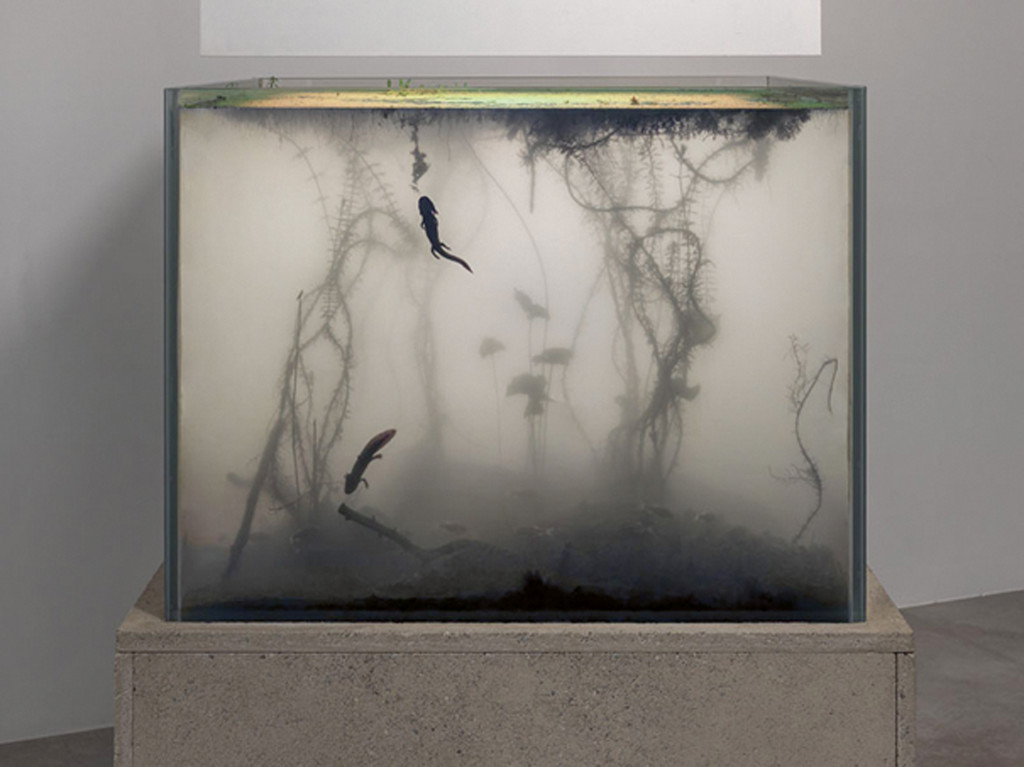
Unlike the fictional and foreboding environments of his saltwater aquariums, Pierre Huyghe’s fresh water Nymphéas Transplant aquariums are based on the nymphéas pond ecosystems of Claude Monet’s gardens in Giverny, France, incorporating plants, fish, amphibians, crustaceans and insects typically found in the ponds. Huyghe interpreted the climatic data of Giverny from a given date or time period to design a lighting program for the aquarium, as evident in the title Nymphéas.
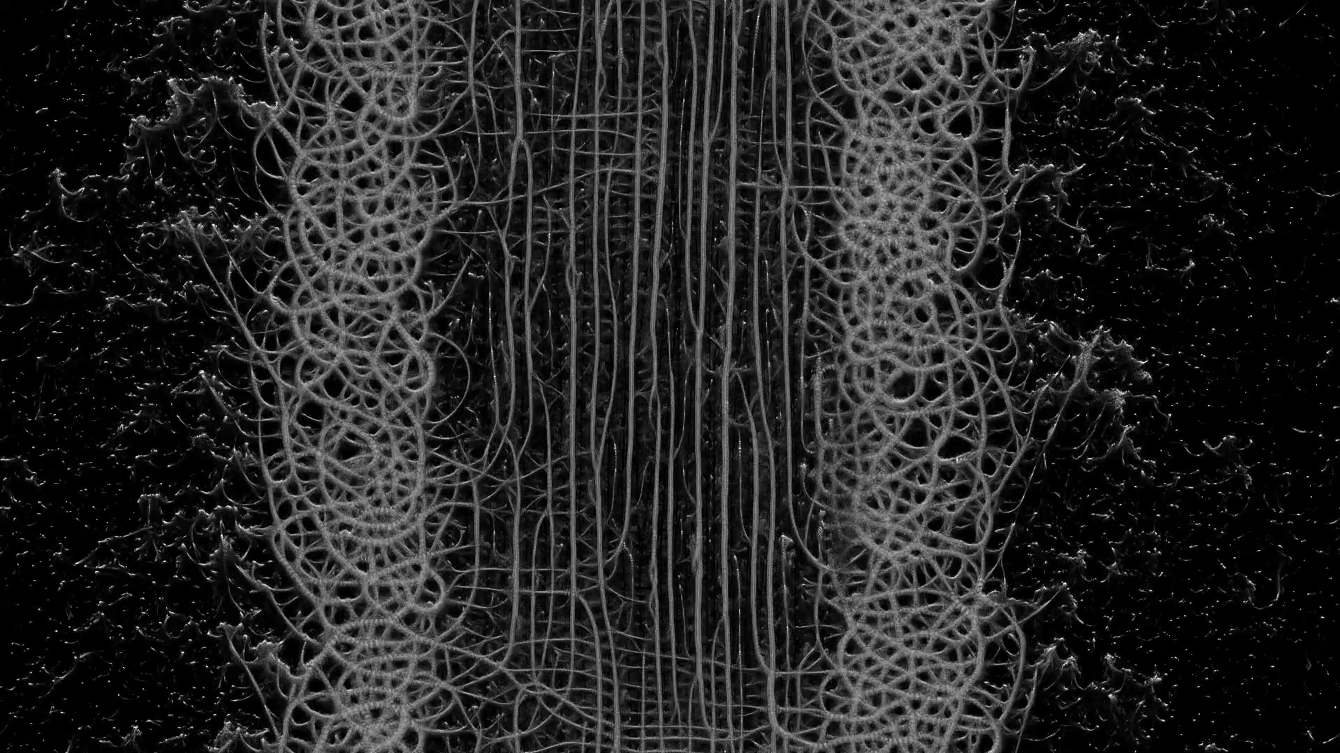
Sage Jenson is a Berlin-based artist interested in constructing realities. His research involves biocomputation and tactile interaction. In Dismantling, using ink, tracing paper, video simulation, and tactile interaction, we hallucinate through complex networks that underpin biological and sociological systems. The viewer is invited to participate in the construction of meaning, as well as bask in the generative dismantling of the scientific face.
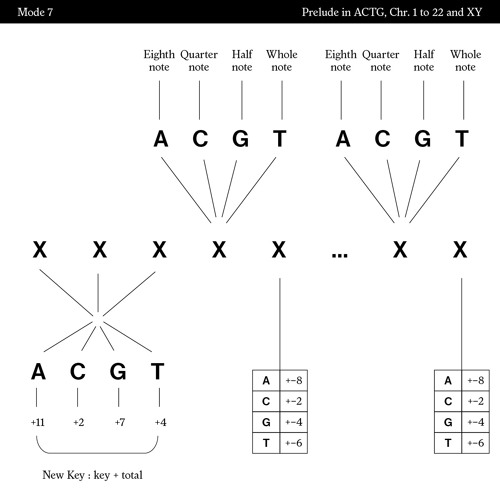
In 2018, ECAL graduate Pierry Jaquillard has been giving a new interpretation of his genetic code through music. Prelude in ACGT is materialized by four screens to interact and understand different interpretations of only one code. Between science and music, this project interfaces culture, codes and nature.
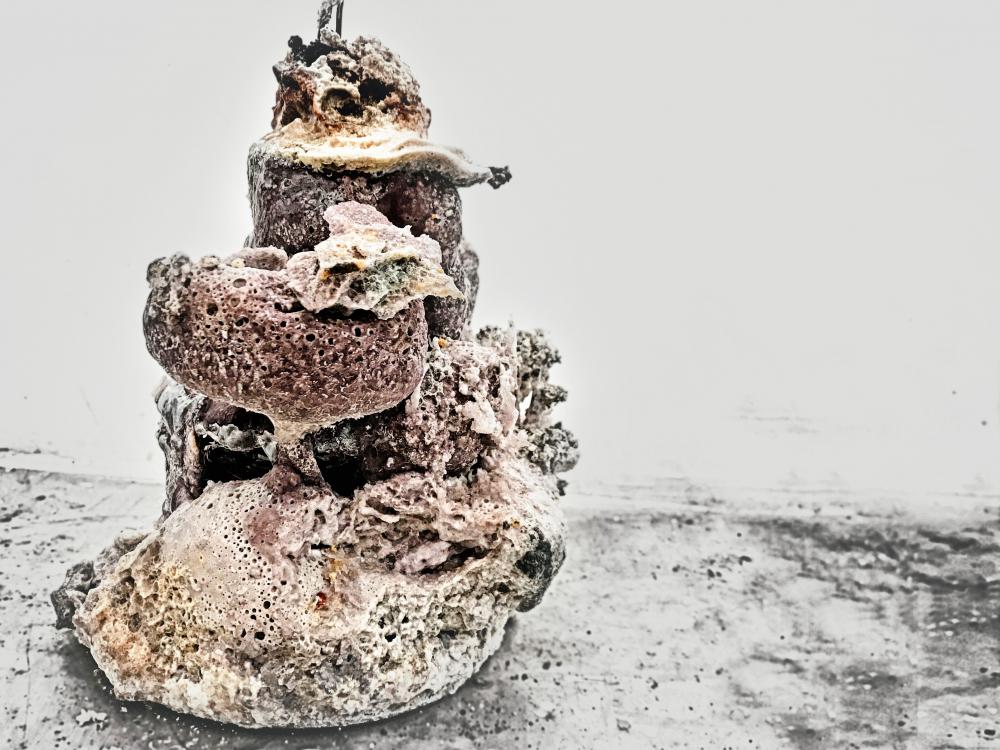
Maria Kuptsova is a transdisciplinary artist, architect and researcher exploring intelligent technologies, bio-computation, synthetic cognition and new aesthetics in her art, research and academic practice. The L[STONE]2 project aims to research and optimize a system where the accretion of calcium carbonate is combined with the utilization of metal and industrial waste.
Bio Materials
Various designers and architects have been tackling the issue of excessive material consumption by working with organic and 100% recyclable and recycled materials. While mycelium has been used in so many projects that it may get truly accessible for consumers in a near future, most of these works are proofs of concepts that are not compatible with a big scale distribution yet. Nonetheless, I particularly appreciate the excellent design choices made to fulfill all criteria that make a product irreproachably sustainable.
I recommend giving a look to the materiom library, giving free access to dozens of interesting DIY materials recipes.
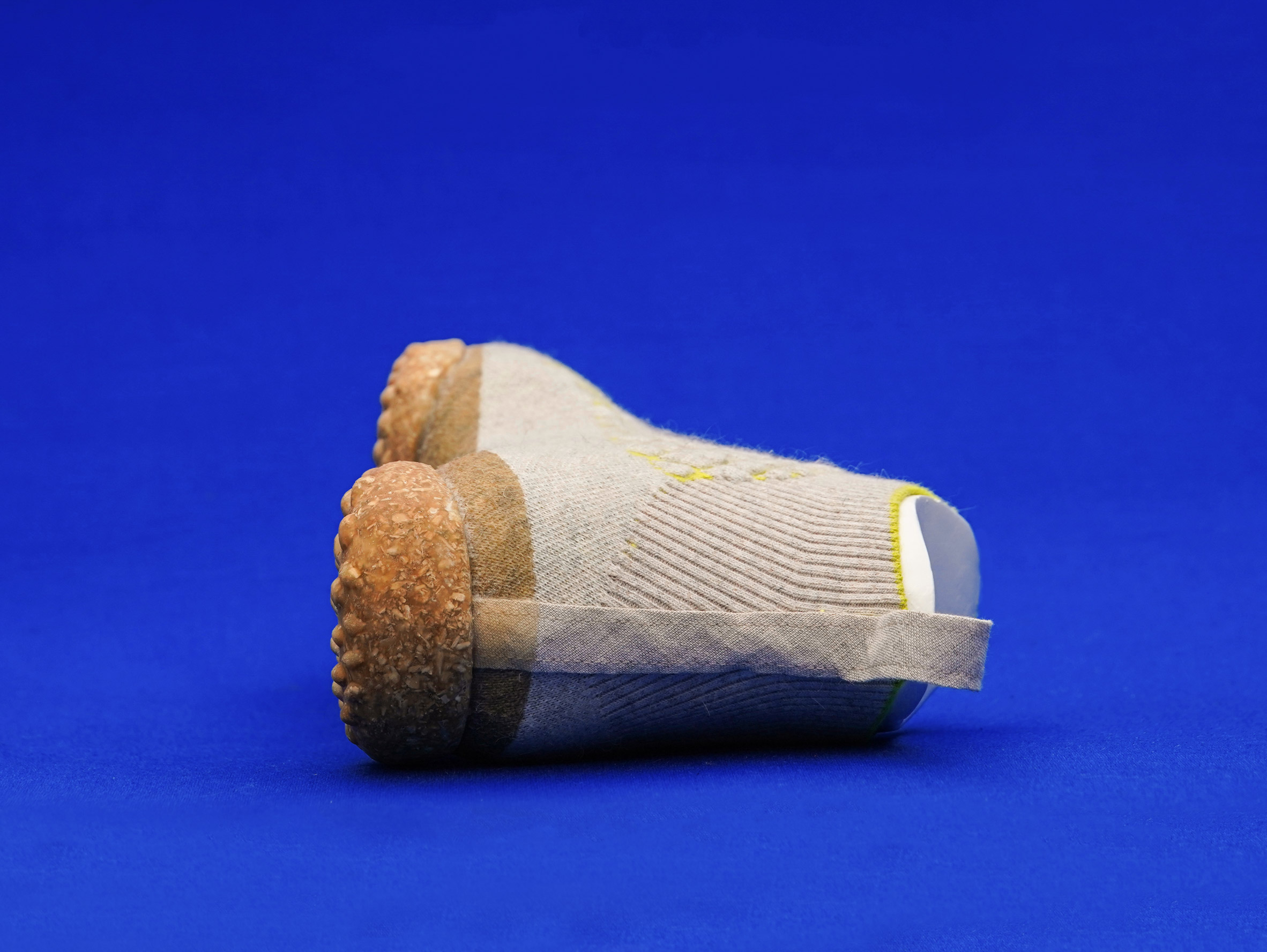
German designer Emilie Burfeind has developed a sock sneaker with a mushroom mycelium sole and a knitted upper made from canine hair that was shed while grooming and would otherwise have been discarded. The Sneature trainer consists of only three bio-based, renewable materials, allowing it to be either taken apart and recycled or industrially composted at the end of its life. In comparison, traditional trainers are generally made from around eight to 12 different components such as nylon fabric and ethylene-vinyl acetate (EVA) foam – many of which are petroleum-based and would survive in landfills for up to 1,000 years.
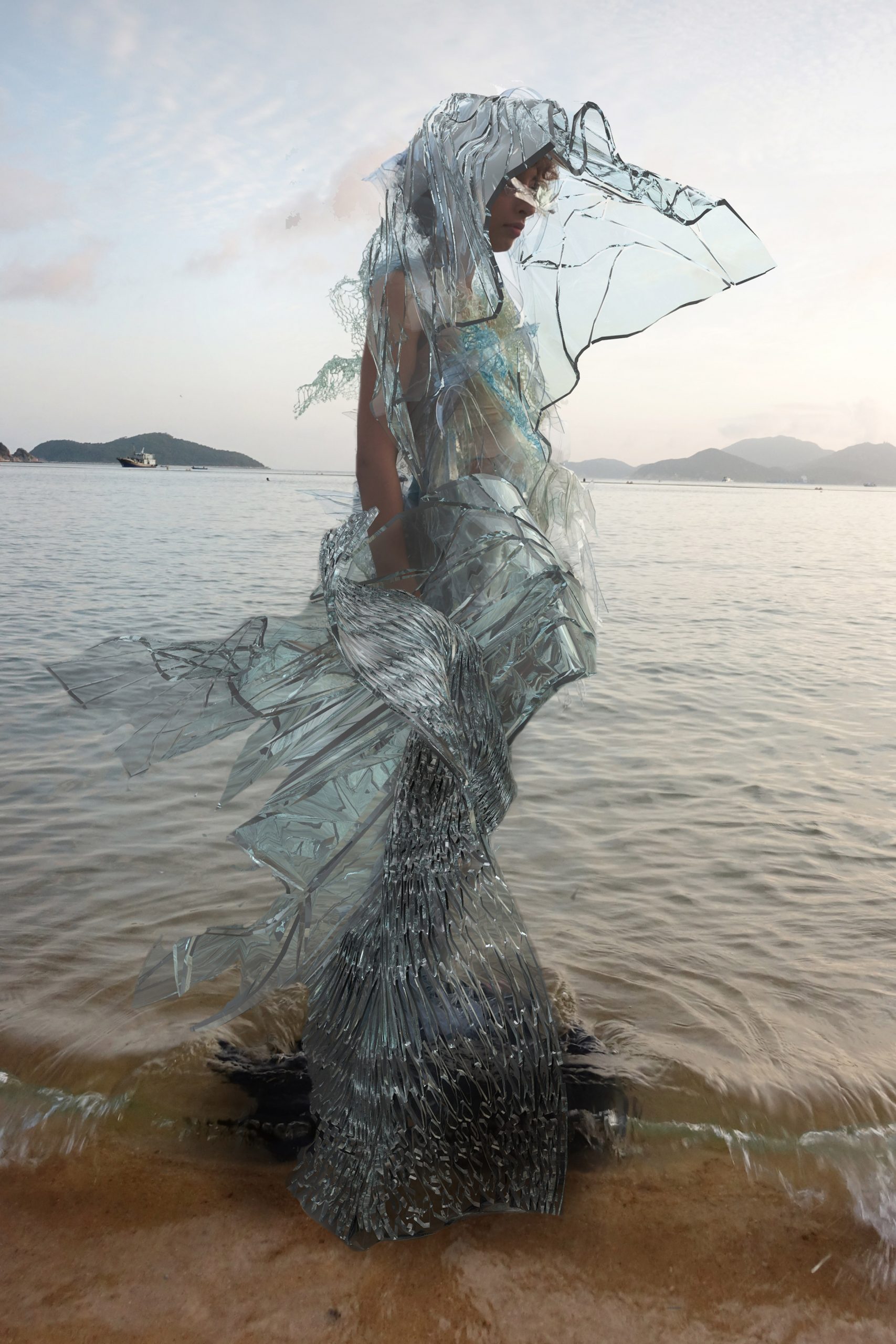
Central Saint Martins graduate Scarlett Yang used algae extract and silk cocoon protein to create a glass-like dress that grows over time and can decompose in water within 24 hours. The biomaterial dress changes shape in response to different humidity and temperature levels, twisting and creasing as these conditions increase. As the London-based graduate explains, this is variable depending on the geographic location and season that the garment is worn in. During a dry winter, for instance, the garment would stiffen and look more sculptural.

Biotech start-up Spiber and The North Face's Japanese distributor Goldwin have created the first mass-manufactured jacket made from synthetic spider silk. In total, 50 Moon Parkas have been produced from the emulated spider silk – an artificial material based on the DNA of spider's silk – which keen buyers can enter a lottery to purchase. Due to the cannibalistic nature of spiders, it has been impossible to mass-produce spider silk in the same way as other animal by-products. Spiber's solution was to re-create the material's molecules from scratch.
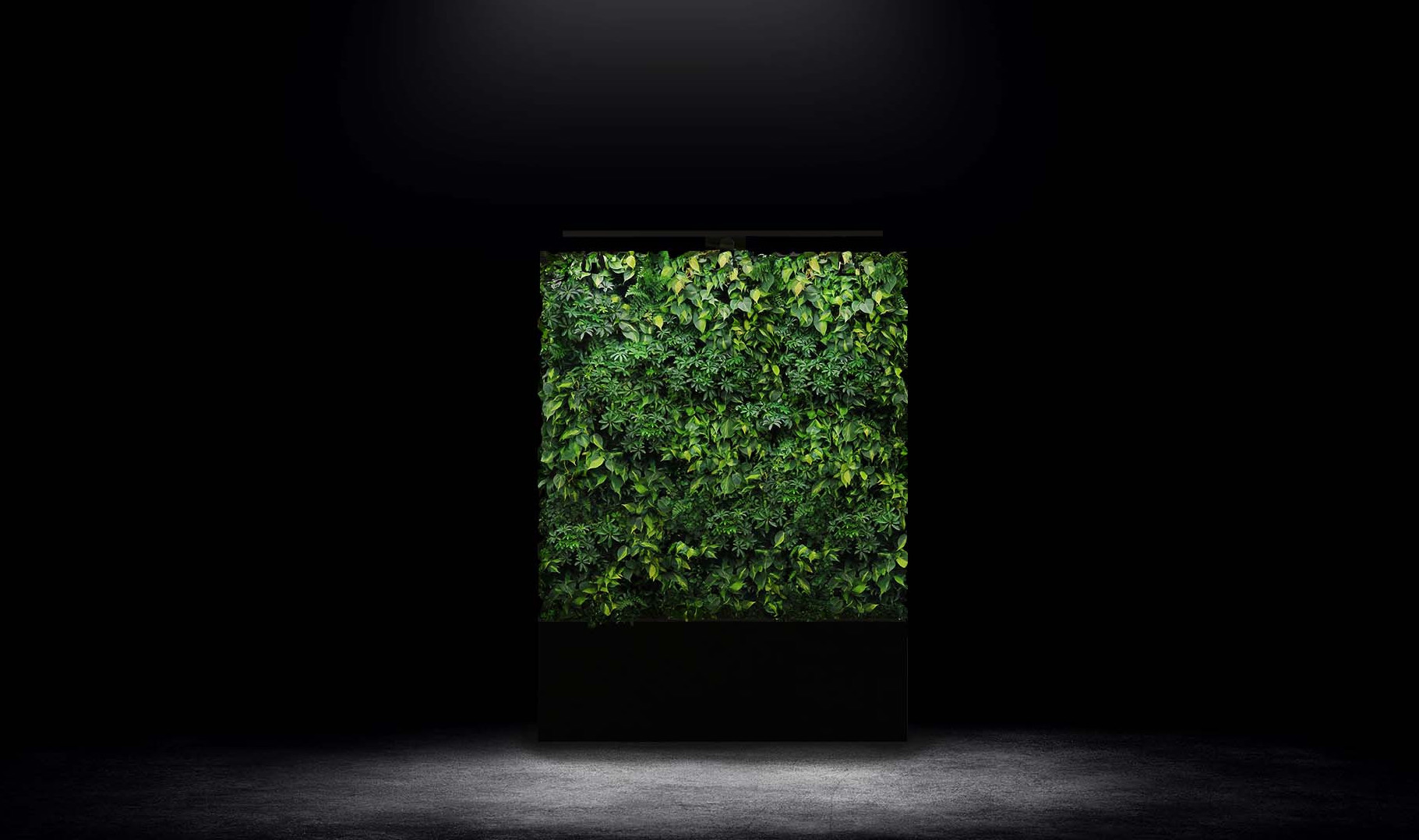
Chicago-based architectural firm Zauben aims to bring the outside inside with a so-called “living wall,” the Model Z ($7,500). An eight-foot-tall rectangular block made of mineral wool and recycled plastic, the Model Z is adorned with more than 200 tropical plants that naturally purify the air within 1,500 square feet of the unit, and an accompanying app lets users track air quality and moisture levels in real-time.
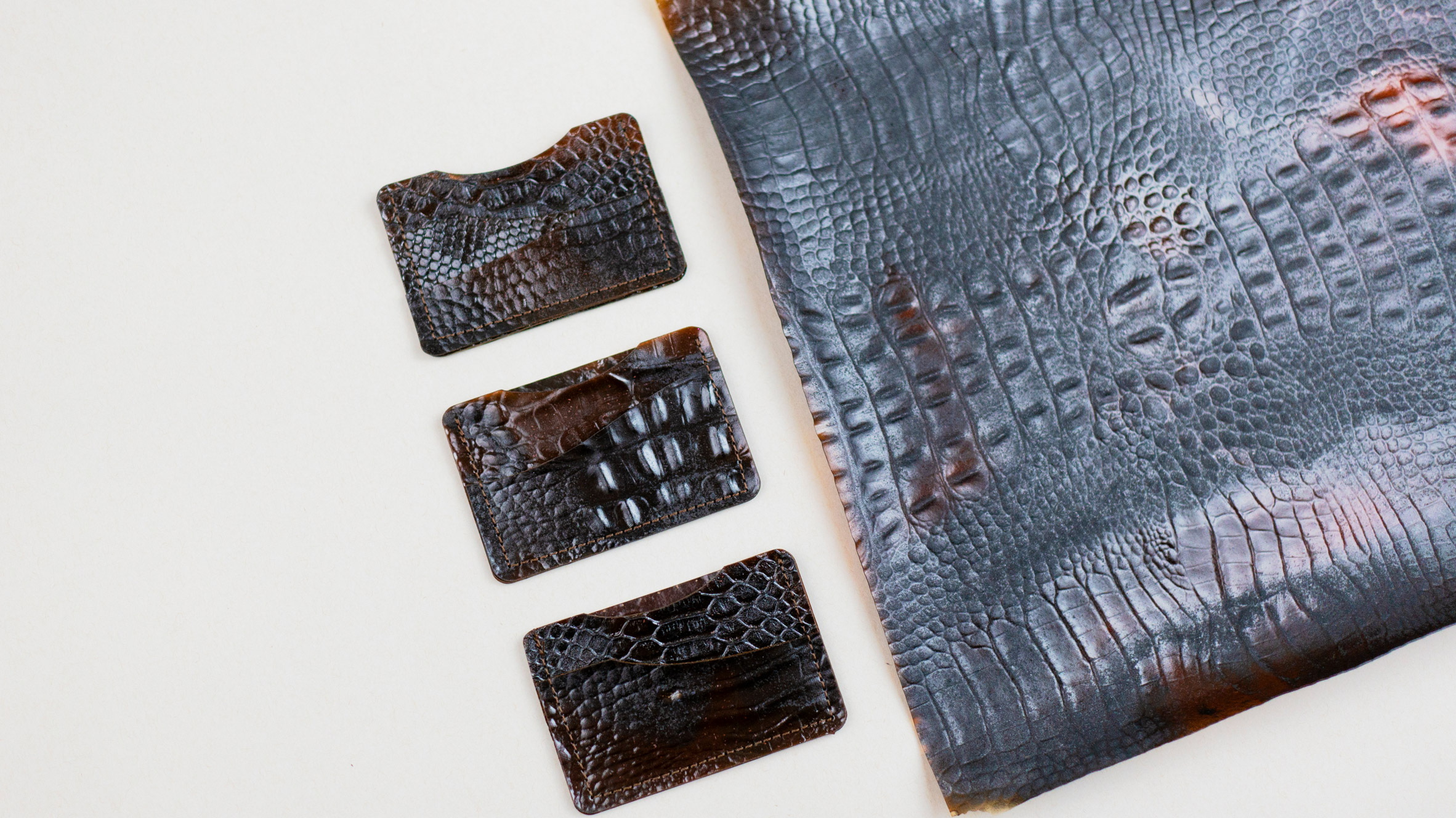
Vietnamese designer Uyen Tran has developed a flexible bio-material called Tômtex, a leather alternative made from food waste that can be embossed with a variety of patterns to replicate animal leathers. The name tôm, meaning shrimp, references the discarded seafood shells that are mixed with coffee grounds to create the textile.
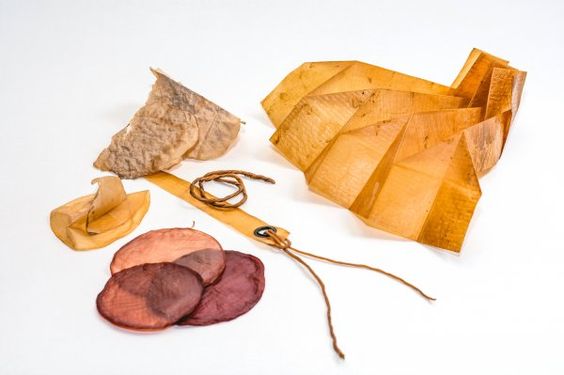
Materiom provides open source recipes and data on materials made from abundant sources of natural ingredients, like agricultural waste. By making this knowledge open, we accelerate materials development and lower barriers to entry in materials markets around the world. We work with companies, cities and communities to support the development of local biomaterial supply chains that nourish local ecologies and economies.
Alive Organisms
Working with living organisms is a challenge giving birth to unconventional projects, opening doors to new levels of creativity. Proper “design” projects are still rare in this field, but I believe recent biotechnological discoveries and various engineering perspectives will provide a growing demand for creative workers.
Once again, mushrooms provide incredible abilities for recycling. More on this here, here, here or there.

Dutch designer Teresa van Dongen has filled a glass tube with octopus bacteria to create a zero-electricity lamp that glows blue when disturbed. She wanted to recreate the natural phenomena of bioluminescent waves – a spectacle that occurs when oxygen mixes with seawater, causing aquatic bacteria to glow brightly. Although there are many different species of bioluminescent microorganism, Van Dongen selected one that can be scraped off the skin of an octopus – a decision influenced by both the degree of luminescence, and whether movement resulted in either a pulse of light or a longer reaction.
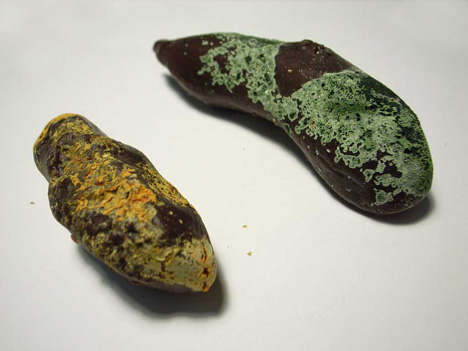
E.chromi is a project created by designers and synthetic biology scientists at Cambridge University in 2009. They genetically engineered bacteria to “secrete a variety of coloured pigments, visible to the naked eye”. BioBricks, standarized sequences of DNA, are inserted into E. coli bacteria, which creates a color coding system to monitor for disease. A special beverage loaded with this engineered E.coli bacteria is consumed by sick patients who can then diagnose their disease simply by looking at the color of their poop.

Designing for the Sixth Extinction by Daisy Ginsberg investigates synthetic biology’s potential impact on biodiversity and conservation. In this version of the future, novel companion species are designed by synthetic biologists to support endangered natural species and ecosystems. Financed by corporate biodiversity offset schemes, these patented species are released into the wild. They compensate for biodiversity lost due to monoculture farming of biomass for biofuel and chemical production. For a thriving bioeconomy, the preservation of natural biodiversity is worthwhile not just for sentimental reasons, it is also a valuable DNA library for future biological designs. Modeled on fungus, bacteria, invertebrates and mammals, the fictional designed species are ecological machines that fill the void left by vanished organisms, or offer novel protection against more harmful invasive species, diseases and pollution.
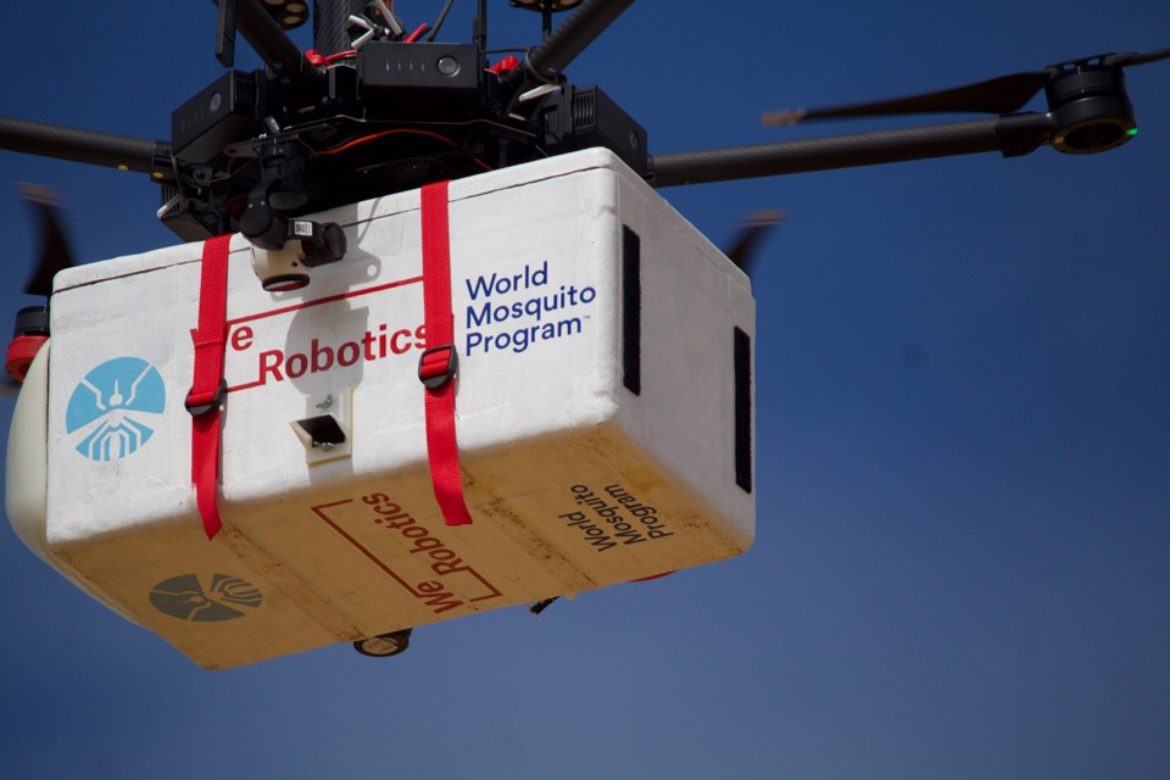
Mosquitos kill more humans every year than any other animal on the planet and conventional methods to reduce mosquito-borne illnesses haven’t worked as well as many hoped. WeRobotics has been hard at work with key partners to reduce the incidence of Zika, Dengue and related threats to public health. They do this by using drones to release modified (harmless) mosquitos in areas affected by Zika or Dengue. These modified mosquitos reduce mingle with dangerous mosquitos to reduce the spread of Zika or Dengue.

Searching for non toxic e-waste processing alternatives VTT Technical Research Centre of Finland has developed a biological filter made of mushroom mycelium mats that could recover of as much as 80% of the gold in electronic scrap. The researchers are also looking at ways to extract copper from circuit board waste by flotating the crushed and sieved material rather than indiscriminate smelting.
Studios & Enterprises
The alliance of biology and design generates new aesthetics and research topics that may deeply influence the next decades. While the extent of this democratisation has yet to be defined |economical challenge|, these new aesthetics seem refreshing to me. Biomaterial enterprises are opening up, and I feel their image is playing an extremely important role in their potential success. This is where the seductive aspect of graphic design stands as a great tool to support a cause. This power on what’s trending is a strategic skill that may get used by well-meaning designers to help the population to move forward.
I was particularly pleased by Urban Morphogenesis beautiful projects.
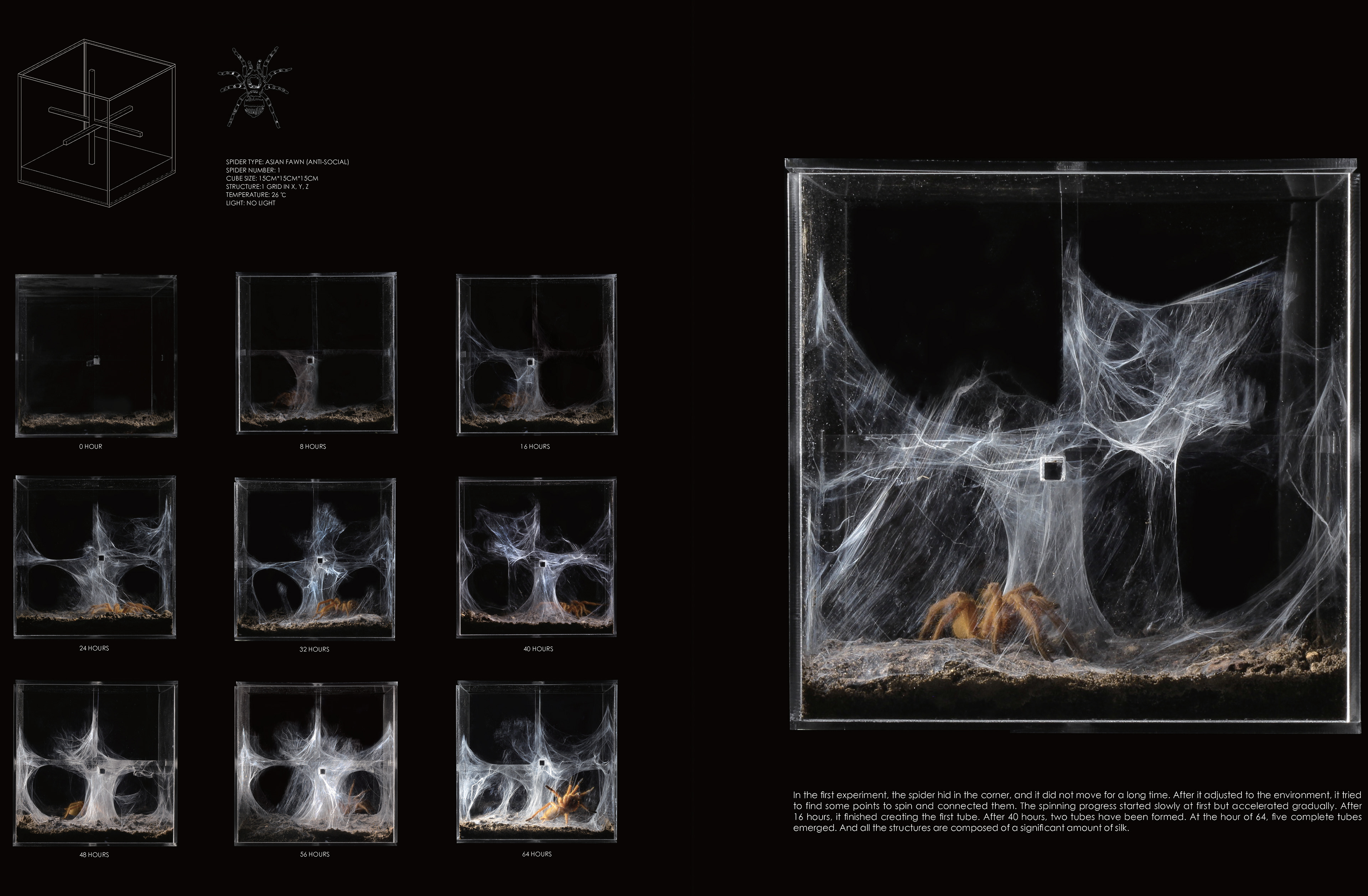
The Urban Morphogenesis Lab is a research and teaching environment part of the BPRO at the Bartlett School of Architecture. The Lab experiments with the application of recent scientific findings within unconventional computing to various scale of design from objects to architecture and the urban. The aim of its research is to mobilize artificial and biological intelligence in search of a new mode of reasoning and therefore designing within a complex milieu where multiple degrees of stability, instability as well as diversity coexist, aiming to transform the act of design into the possibility to hack into natural as well as artificial morphogenetic processes, in real time and designate novel realms of operations.
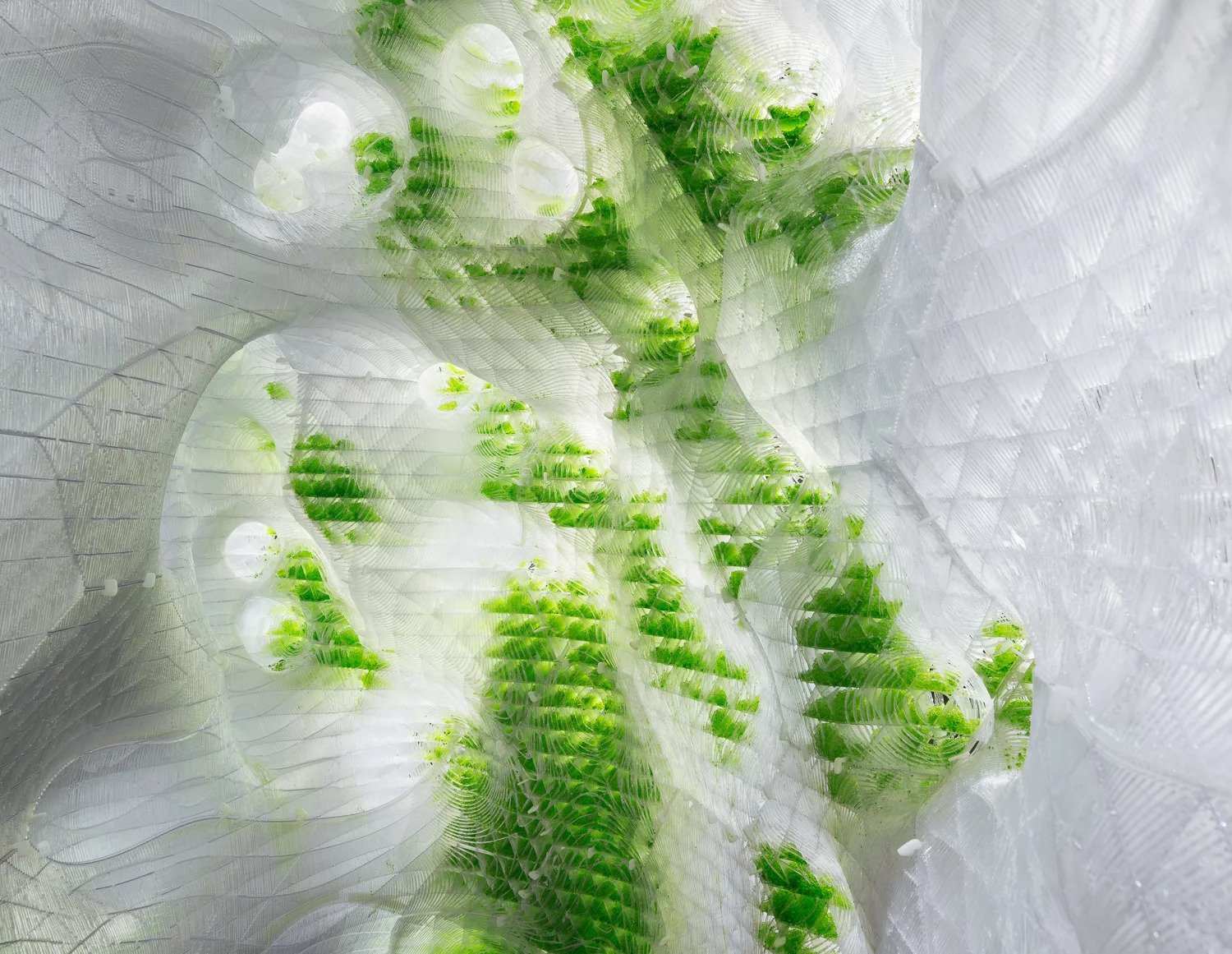
ecoLogicStudio is an architectural and urban design practice specialized in environmental design, urban self-sufficiency and building integrated nature. Marco Poletto and Claudia Pasquero propose to redefine the “city” as a fertile terrain for breeding new practices for the synthesis of “agri-urban” ecosystems. Within this paradigm they seek to develop a new agency for architecture, to be discovered from a direct engagement with the vitality of bottom-up eco-social systems and processes.
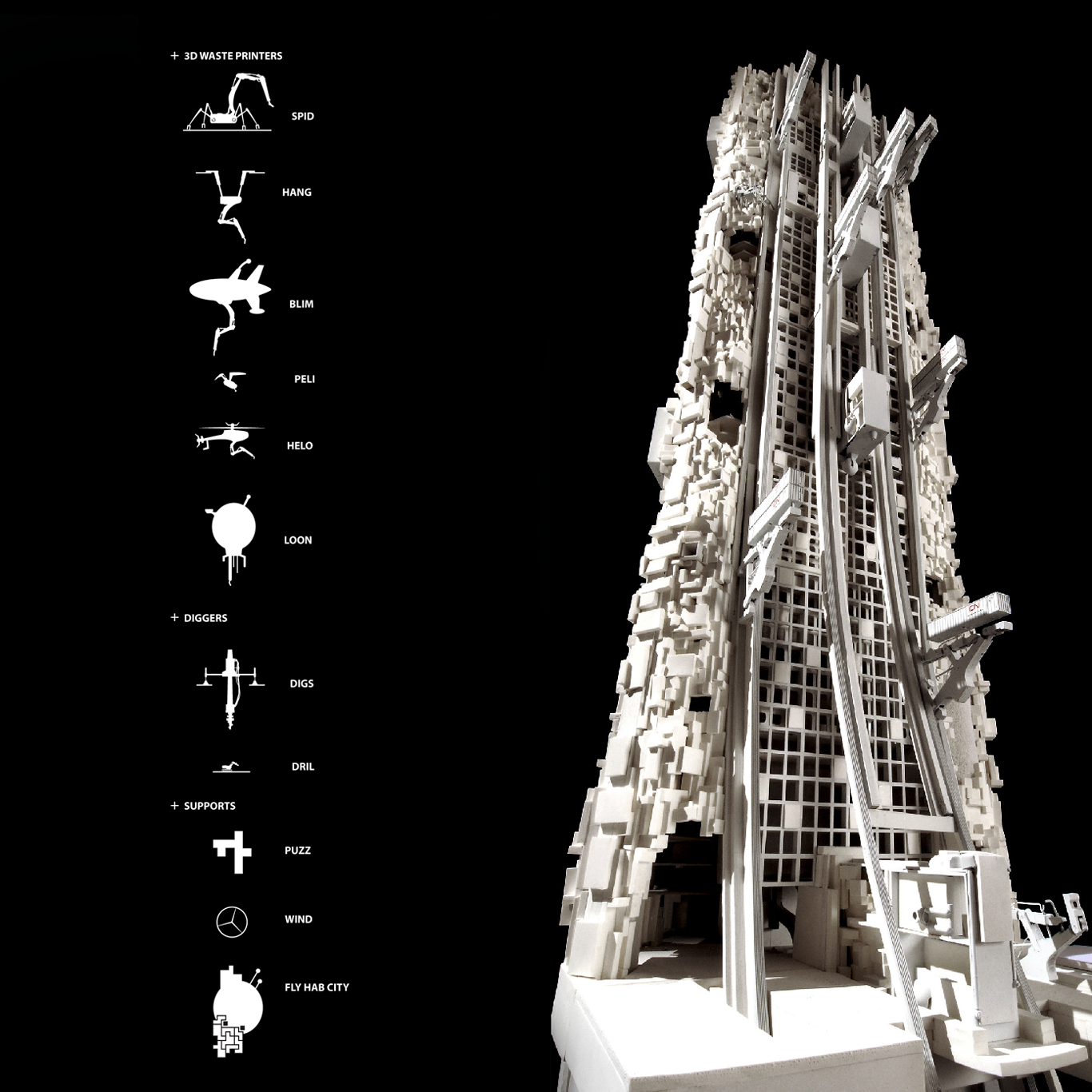
Terreform ONE is a nonprofit architecture and urban design research group. They endeavour to combat the extinction of all planetary species through pioneering acts of design. Their projects aim to illuminate the environmental possibilities of habitats, cities and landscapes across the globe. Their collaborative process includes speculating about the ways in which emerging technologies will impact future urban generations and local biodiversity. They focus on the intersections of ecological planning, biotech architecture, urban systems, and public art.
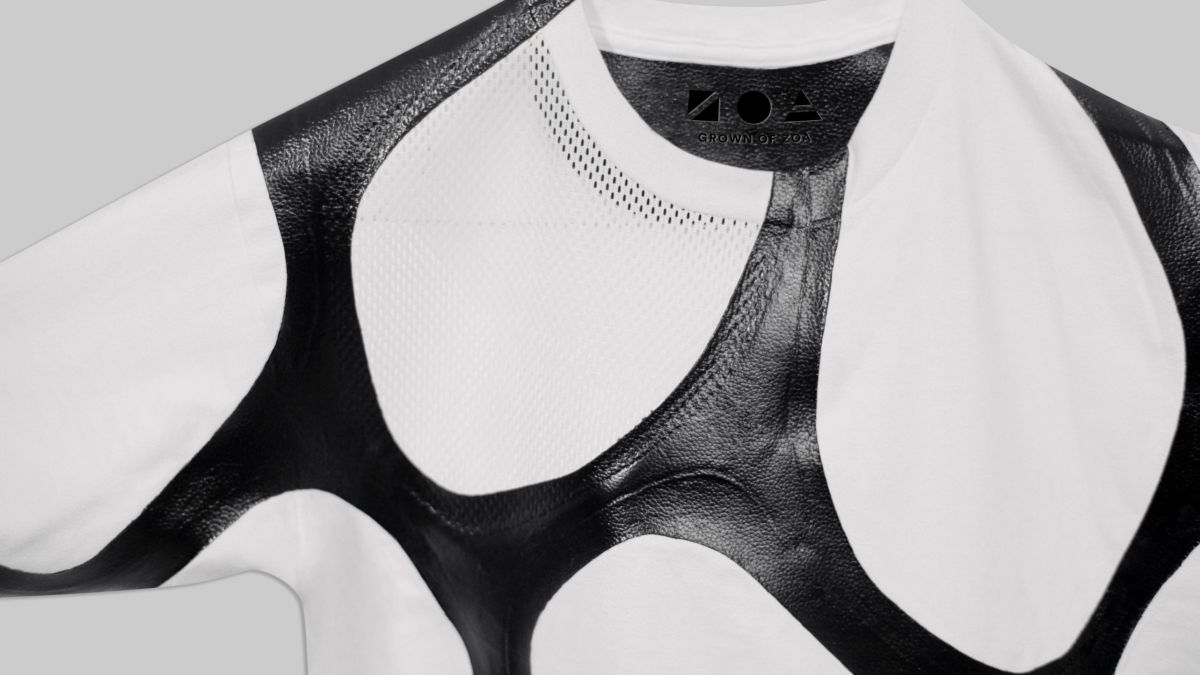
Modern Meadow: Biofabricated Textiles and Materials

Ecovative Design: Mycelium Specialists
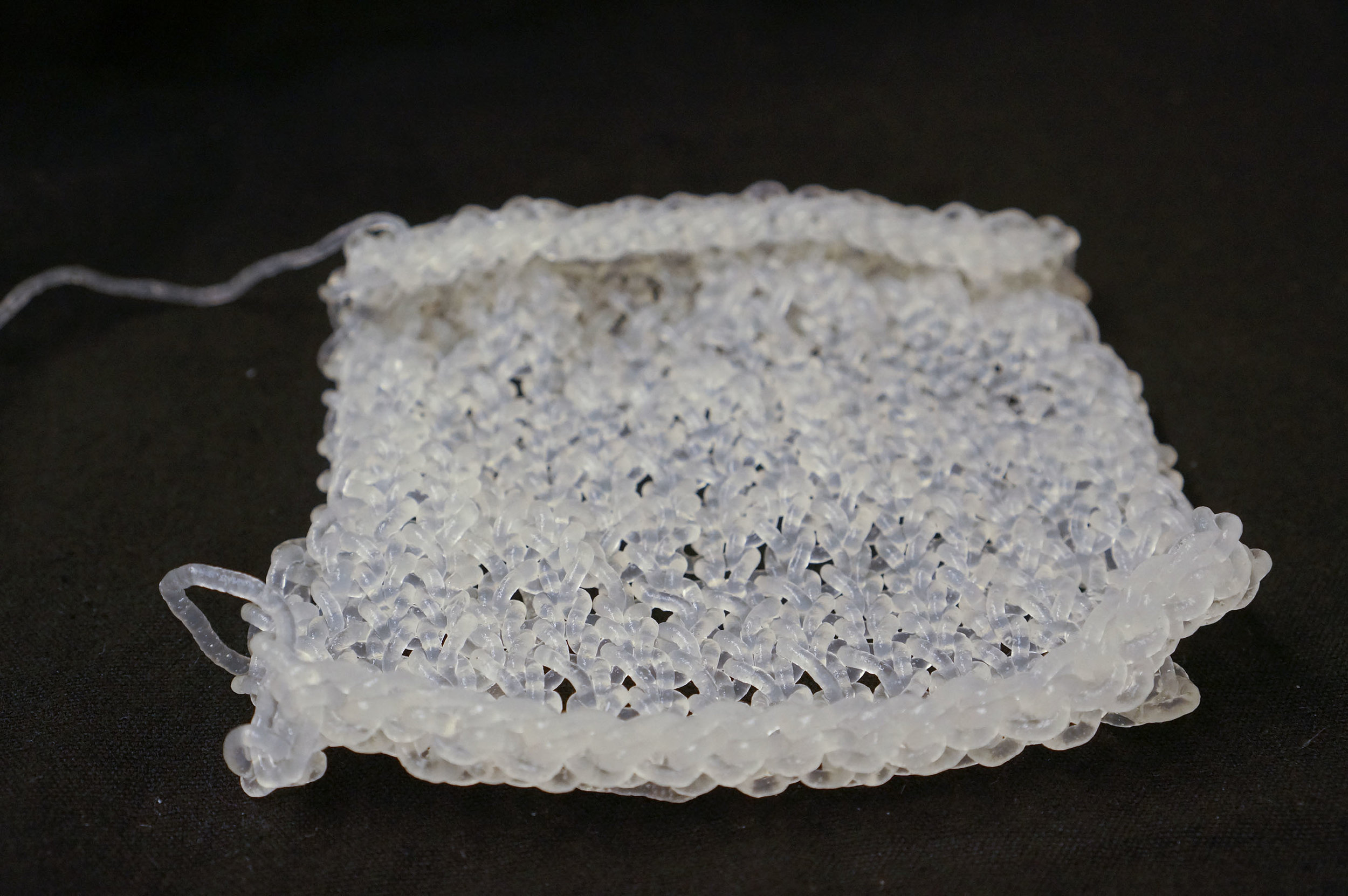
Algiknit: Seaweed Fibers
MIT
These new labs provide a very relevant development at the intersection of technology and life. The futuristic approach emerging from their uncountable projects, publications, and research is wholly impressive and inspiring.
The organic precision of the Vespers series is simply mesmerising. I suggest you to visit the Neri Oxman’s beautiful website.
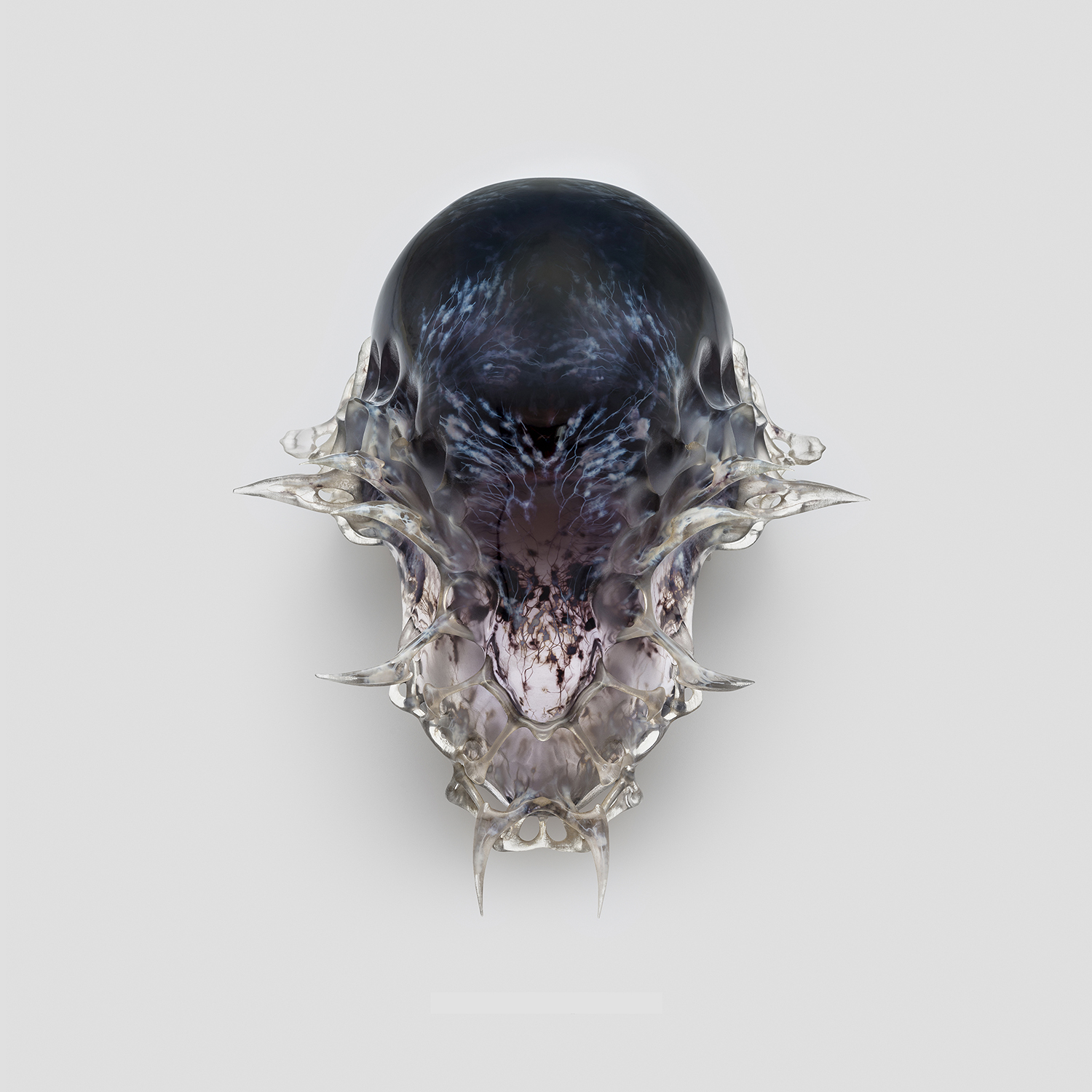
The Mediated Matter group focuses on Nature-inspired Design and Design-inspired Nature. They conduct research at the intersection of computational design, digital fabrication, materials science and synthetic biology and apply that knowledge to design across scales from the micro scale to the building scale. Their research area, entitled Material Ecology, integrates computational form-finding strategies with biologically inspired fabrication. This design approach enables the mediation between objects and environment; between humans and objects; and between humans and environment. Their goal is to enhance the relation between natural and man-made environments by achieving high degrees of design customisation and versatility, environmental performance integration and material efficiency.
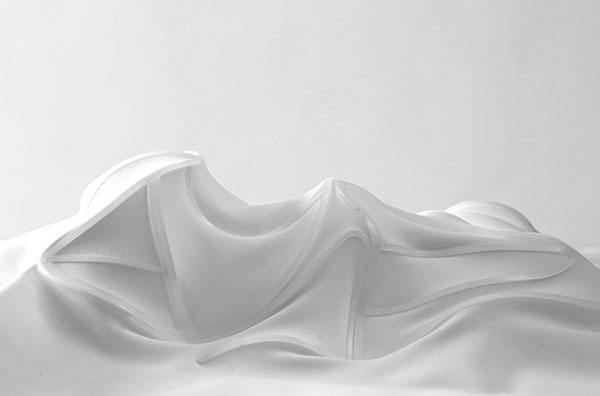
The Self-Assembly Lab is a research lab at MIT inventing self-assembly and programmable material technologies.
To unlock a material’s programmable potential, consider its natural characteristics.
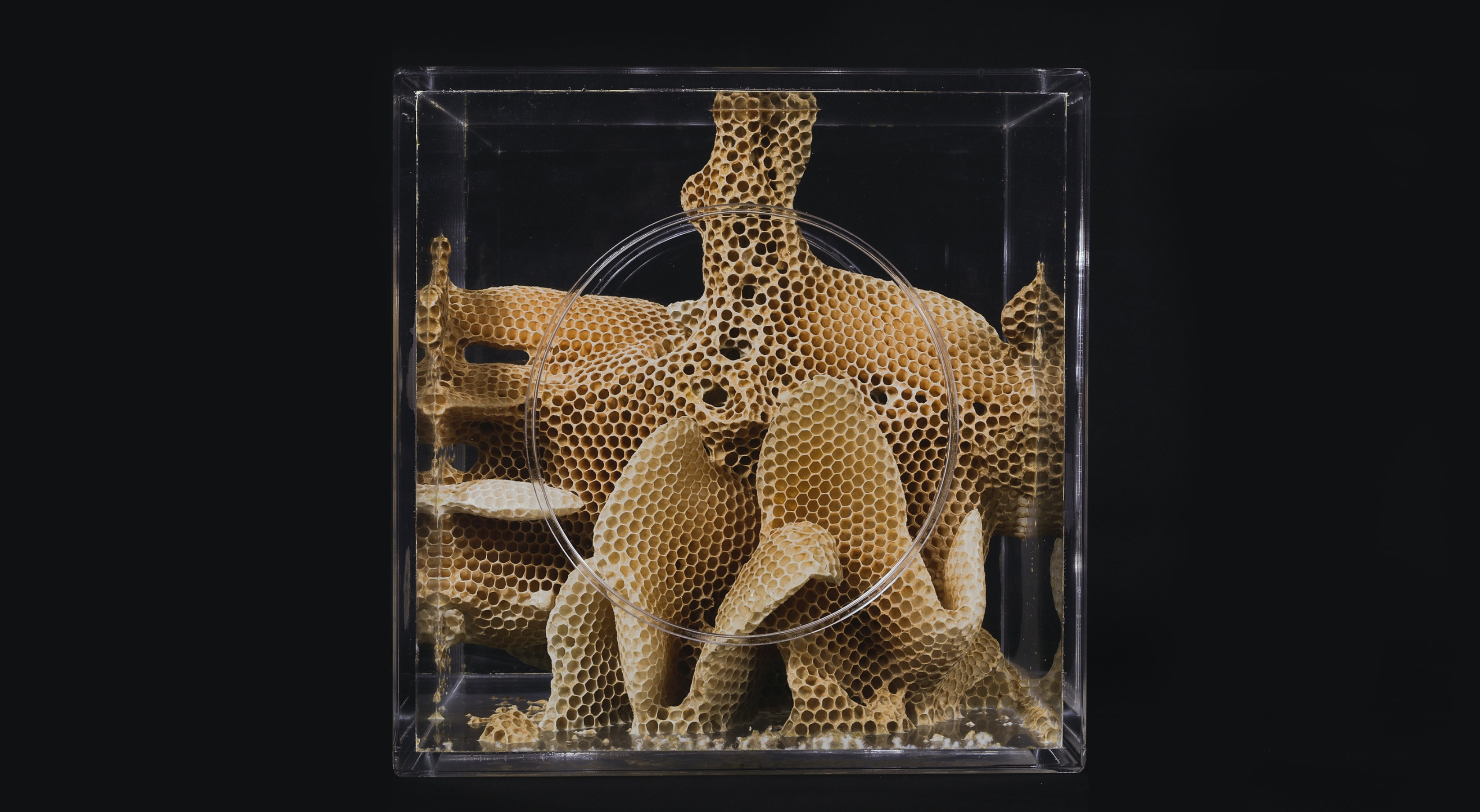
Neri Oxman is the multi-disciplinary designer who founded the Mediated Matter Group at the Massachussets Institute of Technology in 2010. She founded the “Material Ecology”. Material Ecology is a design philosophy, research area, and scientific approach that explores, informs, and expresses interrelationships between the built, the grown, and the augmented.
Magazines

The Digital Revolution brought us to this point, where brain mapping, genome sequencing, gene editing, synthetic biology, 3-D printing, and artificial intelligence are not just feasible, but breaking out all over the planet, in research labs, food labs, and garage labs, in fitness centers, mindfulness retreats, fertility clinics, and retirement communities. That’s why they created NEO.LIFE: to report from the front lines of this Neobiological Revolution.

BIODESIGNED IS AN INDEPENDENT, NOT-FOR-PROFIT PUBLICATION PRODUCED BY BIODESIGN CHALLENGE.

Launched by Kris De Decker, the Low-tech Magazine questions the belief in technological progress, and highlights the potential of past knowledge and technologies for designing a sustainable society. Their website is solar-powered and self-hosted.
Antoine Barras
Mémoire
2021
